Learning from places named after Nelson Mandela through Graphic Heritage.


Learning from places named after Nelson Mandela through Graphic Heritage.

Learning from places named after Nelson Mandela through Graphic Heritage
Robert G. Harland, Yolandi Burger & Celeste McKenzie (Eds.)
Loughborough University Research Team
Robert Harland Principal investigator
Yolandi Burger Co-investigator and project coordinator
Shichao Zhao Co-investigator
Nelson Mandela Foundation Team
Razia Saleh Head of archives and research
Zandile Myeka Metadata and photographic archivist
Ann-Young Maharaj Exhibition coordinator
Collaborators
Celeste McKenzie Art director, documentarian, photographer and narrative storyteller (IIE Vega School)
Nkululeko Mthembu Stakeholder workshops coordinator (Pista Ventures)
Everardt A. Burger Institutional partner and lecturer in civil engineering (Tshwane University of Technology)
Totem Media Exhibition designers
A collaboration between Loughborough University, Nelson Mandela Foundation, and Tshwane University of Technology made possible through funding from the Higher Education Innovation Fund in the United Kingdom.
 Market Photo Workshop graduates photo documenting Nelson Mandela Bridge in Braamfontein (Photography: Alet Pretorius)
Market Photo Workshop graduates photo documenting Nelson Mandela Bridge in Braamfontein (Photography: Alet Pretorius)
In 2021, we received an email from Dr Yolandi Burger requesting information about several sites named after Nelson Mandela in the Gauteng region of South Africa and the city of Leicester in the United Kingdom. This started an amazing collaboration journey between Loughborough University, particularly with Drs Robert Harland and Yolandi Burger and the Nelson Mandela Foundation. It was gratifying for the Foundation to know that resources we had painstakingly compiled on Nelson Mandela for about two decades could be utilised in academia. It opened avenues of research enquiry and introduced us to a new research concept called Graphic Heritage.
When the opportunity arose to deepen this collaboration with the Named after Nelson project we immediately accepted it. It provided a concrete opportunity to extend discussions with the project team that first began in 2021. Through careful research and curation, the Named after Nelson exhibition explores six places named after Nelson Mandela in the Gauteng province of South Africa. It explores the contrast in imagery, information, location and access which links back to the archive held in custody at the Foundation.
This collaboration will inform our ongoing mission to keep the legacy of Nelson Mandela alive through convening dialogue around critical social issues. Specifically, the project will support existing efforts to disseminate his life’s work through the Foundation’s core activities in the memory and dialogue nexus.

Head: Archive and Research at Nelson Mandela Foundation
“Madiba spent half an hour in a transit lounge going through this airport, now they want to call it the Nelson Mandela Airport! He spends six years in Pollsmoor Prison, and if Pollsmoor wants to use Madiba’s name, there is a different proportional weight.”
Verne Harris1
Nelson Mandela Foundation’s vision, mission and core work 2
Vision: A just society, one which learns from its pasts and listens to all its voices.
Mission: Contribute to the making of a just society by mobilising the legacy of Nelson Mandela, providing public access to information on his life and times, and convening dialogue on critical social issues.
Core work: Deliver to the world an integrated and dynamic information resource on the life and times of Nelson Mandela, and promote the finding of sustainable solutions to critical social problems through memory-based dialogue interventions.
 Robert Harland and Yolandi Burger working at NMF (Photography: Celeste McKenzie)
Robert Harland and Yolandi Burger working at NMF (Photography: Celeste McKenzie)
What might we expect to learn about a person when visiting a place named after them? This question has occupied design researchers at Loughborough University since 2021. It has been explored in places associated with Nelson Mandela. Most recently this has been in partnership with the Nelson Mandela Foundation. This booklet provides an account of the research during this period under the title of Memorialising Mandela in the Metropolis.
The most recent phase of the work is encompassed in the project Named after Nelson: Learning from places named after Nelson Mandela through graphic heritage [NaN]. Undertaken with the Nelson Mandela Foundation, NaN extends earlier collaboration between researchers at Loughborough University and the Foundation. Combining perspectives from design, photography, urban planning, archival practice, and heritage studies, NaN explores the related notions of toponymy and topophilia in connection to places named after Nelson Mandela.
The Oxford English Dictionary defines toponymy as “The place-names of a country or district as a subject of study,” and topophilia as “Love of, or emotional connection to,
The deep black tones signify the Black people of South Africa, with Mandela Village in Hammanskraal rooted in rich ancestral history. Dating back to the 13th century, it is a land first woven into the tapestry of history by the Batswana people, its cultural depth as profound as the colour it embodies.
a particular place or physical environment.” Taken together, NaN utilises a combination of the two to mean any place or physical environment connected to Nelson Mandela through the use of his name. Thus, such name designation effects and affects those who visit places named after Nelson regardless of the efficacy and reasoning behind the namimg act. The purposeful act of place naming (effect) and the influence this may have (affect) bears a significant correlation between a particular place and the vision, mission and core work of the Nelson Mandela Foundation. Consequently, naming a place after Nelson Mandela should not be undertaken lightly.
This booklet reports on the NaN project and the prior work that contributed to its formation and realisation. The vital component is six carefully selected case studies in the Gauteng Province from a wider selection of some places named after Nelson Mandela in South Africa (see p. 70-71). In no particular order these are Mandela Village, Hammanskraal; Nelson Mandela Bridge, Braamfontein; Nelson Mandela Centre of Memory, Houghton; Nelson Mandela Park, Mamelodi; Nelson Mandela Square, Sandton; and Mandela Theatre, Braamfontein.
Spanning the divide between history and hope, the Nelson Mandela Bridge is a symbol of unity, painted in white to represent the peace and harmony sought between South Africa’s rainbow nation.
The rich red hues within the Nelson Mandela Theatre evoke the profound sacrifices and bloodshed endured during South Africa’s arduous fight for freedom. Each performance on its stage is a testament to history, with past shows weaving the narrative of struggle and triumph.
In support of the case studies, the approach to the project is explained before providing early findings up to the point of the accompanying exhibition at Nelson Mandela Centre of Memory in 2024. From the rich variety of commemorative representations that adorn, for example, Nelson Mandela Square in Sandton, to the sparsley labelled Nelson Mandela Park in Mamelodi, the frame of graphic heritage is utilised to reveal both the presence and absence of Mandela’s endorsements across the case study locations. Before describing and depicting the six locations substantively, these are summarised in short form to provide a convenient ready reference for ease of comparison (see p. 8-9).
Each case study in the NaN exhibition and featured in this booklet is a narrative thread in the tapestry of Mandela’s legacy, intertwined with the six colours – black, gold, green, white, chilli red and blue – of the South African national flag launched.3
Like the expansive blue of the South African sky, the Nelson Mandela Centre of Memory is synonymous with endless possibilities. It stands as a beacon of hope, its azure emblematic of the boundless opportunities available to all South Africans.

Nestled in the verdant embrace of Mamelodi, the green of Nelson Mandela Park speaks to the fertility of South Africa’s land. This lush area serves as a communal heart, where the promise of growth and prosperity is as abundant as the natural beauty that flourishes within it.
The golden aura of Sandton where the Nelson Mandela Square lies reflects South Africa’s vast mineral wealth. Sandton’s opulence and vibrant economy shines brightly, mirroring the precious resources beneath the land that have long fuelled the nation’s prosperity.
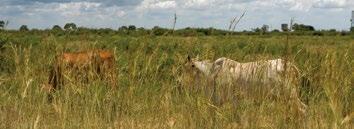
Mandela Village in Hammanskraal, around 40 kilometres from Pretoria, symbolises the evolution of post-apartheid urban development. Integrated into the Hammanskraal Local Area Committee in 1995, it encompasses schools, community halls, sports facilities, and a craft market. A statue of Nelson Mandela was unveiled in 1999 and stands as a beacon of hope and a tribute to his legacy. Despite challenges the community benefits from spacious living conditions and a harmonious environment. The local sports field and other amenities named after Mandela aim to attract tourism, leveraging its proximity to the N1 highway and Dinokeng Game Reserve. The village embodies Mandela’s legacy, reflecting the community’s pride and identity while emphasising the importance of preserving this legacy for future generations.

The Nelson Mandela Bridge, connecting Braamfontein and Newtown in Johannesburg, is an engineering landmark and a symbolic bridge over South Africa’s divided past. As the largest cable-stayed bridge in Southern Africa, it signifies urban transformation and integration into Johannesburg’s skyline. Despite its historical and symbolic significance, the bridge’s practical use often overshadows its tribute to Mandela’s legacy of unity and democracy. Upgraded lighting for the FIFA 2010 World Cup introduced rainbow colours at night, celebrating Mandela’s vision. However, an informal workshop with Market Photo Workshop students revealed a nuanced perspective. They noted the bridge’s neglect and a need for greater public engagement and education to maintain its significance as a monument to South Africa’s journey toward unity.
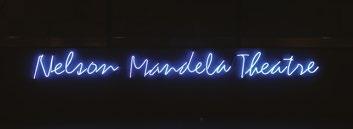
Established in 1962 the Johannesburg Civic Theatre, renamed the Joburg Theatre in 2009, honours Nelson Mandela’s legacy with its main auditorium. Endorsed by Mandela, the Nelson Mandela Theatre stands as a cultural beacon, offering diverse performances from Broadway musicals to local productions, symbolising a commitment to artistic excellence and societal transformation. Hosting the Nelson Mandela Annual Lecture in 2023, the theatre amplifies its role in promoting global peace and social justice. With 1,069 seats, it’s the largest venue in the complex, fostering a sense of community through the arts. The theatre’s design, blending modernity with tradition, reflects South Africa’s rich cultural tapestry and the enduring impact of Mandela’s legacy. It is a pivotal point for Johannesburg’s cultural diversity, encouraging artistic engagement and contributing significantly to its status as an arts and entertainment hub.

The Nelson Mandela Foundation, established in 1999 and located in the Nelson Mandela Centre of Memory in Houghton, Johannesburg, is a non-profit organisation that encapsulates the memory and enduring influence of its eponymous founder, Nelson Mandela. The Nelson Mandela Centre of Memory houses an extensive archive of Mandela’s life, meticulously preserved and digitised for global accessibility. The Foundation engages in dialogue and advocacy, promoting a just society honouring diversity and historical narratives. Initiatives like International Mandela Day foster change and address contemporary societal issues. The Foundation’s commitment to societal transformation is visually narrated through its photographic documentation, educational exhibitions, and a rich repository of resources, affirming its role as a dynamic memorial and a knowledge centre dedicated to Mandela’s legacy.

In the heart of Mamelodi, a township with roots stretching back to 1945 on the farm Vlakfontein, lies Nelson Mandela Park, a symbol of transformation and community spirit. Opened by Nelson Mandela in 1996, the park was the inaugural project of the Greening of Mamelodi initiative, aimed at providing a communal space for relaxation and play amidst the township’s dense urban fabric. The photographic exploration illuminates the park’s cherished role in the community and its challenges, including maintenance and safety concerns. Despite these hurdles, the park remains a vibrant hub for community gatherings, sports, and children’s play. The minimal signage and the park’s functional importance to the local community raise questions about the ‘opacity’ and endurance of Mandela’s legacy in places named in his honour.
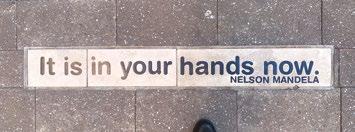
Sandton’s evolution from a historical site to Africa’s financial and cultural powerhouse is marked by its transformation into Johannesburg’s economic core. Since its establishment in 1906, urbanisation has shifted Sandton from a farming district to a bustling metropolis. Renamed in 2004 to honour Nelson Mandela and the first decade of the South African democracy, Nelson Mandela Square is at the heart of this hub, blending heritage with modern luxury. It features upscale shopping, dining, and leisure alongside almost 400 premium retail brands. The square, adjacent to Sandton City and the Sandton Convention Centre, is anchored by a prominent Mandela statue, symbolising the country’s progress post-apartheid. It is a vibrant and culturally rich area celebrating Mandela’s legacy, attracting locals and tourists.
NaN is rooted in research undertaken between researchers at Loughborough University in the United Kingdom and Tongji University in China from 2018 to 2021. That research, under the guise of Repositioning Graphic Heritage (RGH)4 set out to answer two questions.
1. What new perspectives can graphic design contribute to design for urban heritage?
2. How can participatory design approaches enhance urban graphic heritage for greater social cohesion?
The onset of the global pandemic that saw the rapid spread of Coronavirus disease (COVID-19) stalled the completion of that study. Hence, although question one established how graphic design could contribute to urban heritage agendas, question two was not fully answered due to the curtailing of the research. Subsequently, funding for the continuation of research between the United Kingdom and China further restricted collaboration. However, in 2022 the opportunity to shift the geographic focus of the original study towards South Africa emerged due to Newton Fund announcing calls for consolidation funding for the completion of research affected by the pandemic. This coincided with new avenues being explored by researchers at Loughborough University.
Shifting the focus of the research towards South Africa emerged during an impromptu conversation between Yolandi Burger (a South African national), Robert Harland, and Alison Barnes about Nelson Mandela Park in the City of Leicester (see photographs). Yolandi asked why the park was named after Nelson Mandela, for which the answer was unknown. Subsequently, it was decided to use graphic heritage to explore the scope for research. Several visits to the park were made to photo-document the location. The park was compared to the same named Nelson Mandela Park in
“The streets, the people, the buildings, and the changing scenes do not come already labeled.”
John Zeisel8
Mamelodi through collaboration with South Africa-based documentarian, Celeste McKenzie who worked with Fidel Mosupye of Supreme Images (a local community member) to document the site.5 A grant was secured for the Mandela Place Making through Graphic Heritage project from the Newton Fund Consolidation Funds call, enabling the continuation of the RGH project to further explore participatory design approaches for greater social cohesion. The key objectives were:
1. Knowledge exchange: To provide knowledge exchange opportunities and promote NMF’s archive as a creative resource for the development of public places and urban spaces named in honour of Nelson Mandela.
2. Creative enterprise: To inform NMF about the ways urban environments function through graphic heritage in the name of Nelson Mandela for educational purposes through the production of design prototype approaches in conjunction with creative industry practitioners.
3. International collaboration: To establish the foundation for long-term international collaboration to align graphic heritage with NMF’s current and future directions in support of their commitment to facilitating access to their archive collection and promoting its accessibility to an international audience.
4. Methodological framework: To review and seek opportunities to develop the NMF’s archive through the application of a graphic heritage taxonomy to explore and analyse how archival resources can be utilised by cultural, creative and heritage organisations and individuals to enhance individual, social and collective graphic memory.
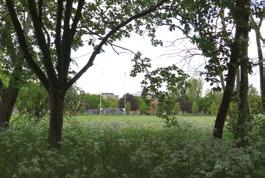
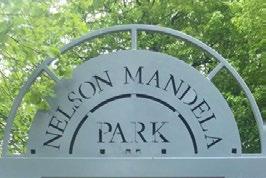
A team of specialists comprising design and planning researchers, heritage professionals, archival specialists, and creative industries practitioners, were assembled to explore how Nelson Mandela’s name was being used to endorse public spaces in South Africa. This involved desk research to identify a sample list of places across the country leading to the selection of five locations in the Gauteng Province that would add to Mamelodi.6
The project team comprised of:
Robert Harland, Reader in Urban Graphic Heritage (Loughborough University)
Yolandi Burger, Research Fellow (Loughborough University)
Everardt Burger, Lecturer in Civil Engineering (Tshwane University of Technology)
Celeste McKenzie, Social Documentarian (IIE Vega School)
Jean-Luc Koenig, Carla Leigh Ziady, Mike J. Van Heerden (Black Box)
Siboniso Bophela (Open Dialogue)
Nkululeko Mthembu (Pista Ventures)
Fidel Mosupye (Supreme Images)
Alet Pretorius (Photojournalist)
Graduates from the Market Photo Workshop
The project culminated in a co-organised workshop at Nelson Mandela Centre of Memory staged with the support of co-organisers:
Razia Saleh, Head: Archive and Research (Nelson Mandela Foundation)
Zandile Myeka, Metadata & Photographs Archivist (Nelson Mandela Foundation)
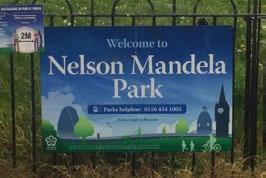
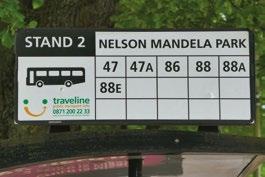
The workshop, called Exploring Madiba’s Graphic Heritage, shared new insights about how graphic heritage provided a unifying concept for those working in toponymy, graphic images, cultural heritage, and place-making, in locations named after Madiba. The event was structured to consider the perspective of researchers, the Nelson Mandela Foundation team, and creative industry practitioners.7 This demonstrated the potential to communicate Madiba’s legacy through physical and virtual environments (for graphic heritage). Notably, from the earlier comparison of Nelson Mandela Parks in Leicester and Mamelodi, one of the insights shared at the workshop was that a critical approach to graphic heritage reveals as much about absence as it does about presence.
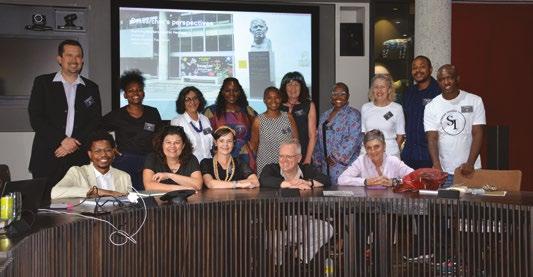
Design for heritage
Graphic heritage
Heritage interpretation
Heritage presentation
Heritage representation
Graphic heritage as a system of representation spanning heritage interpretation, presentation, and representation. 12
The workshop provided the opportunity to further test a basic model that had emerged from the RGH project that had demonstrated how graphic heritage straddled the contested tripartite relationship between heritage interpretation, presentation, and representation. Concerning these, graphic heritage is used as much as a critical perspective as it is a practical tool. The use of this approach encourages one to ask how graphic images in the context of design for heritage function as:
Interpretation: What constitutes heritage (designation)
Presentation: Why it is heritage (explanation)
Representation: How it affects people through the reproduction of meaning (impact)9
Design inquiry is central to this approach, and provides the methodological framework for graphic heritage. Seeking out portrayals of Nelson Mandela in places named after him
is aligned with John Zeisel’s work on Observing Physical Traces, 10 concerning systematic approaches to looking at physical surroundings. Zeisel’s methodology allows for developing concepts, formulating hypotheses and empirical testing.
The case studies featured in the study follow this approach towards the establishment of an explanatory hypothesis framed within the domain of graphic heritage. To grasp the potential of this, it is important to also acknowledge what constitutes the ‘graphic’ in graphic heritage. Significant in this pursuit is an understanding of what has been referred to as a graphic image as it is used to reflect the concerns of Art Historians. Graphic images in this regard has been used as a catch-all term for an assortment of “pictures”, “statues”, “architectural imagery”, and “designs” that may incorporate abstract, non-representational paintings, ornamental or structural designs, diagrams, and graphs.11 To utilise this concept with Nelson Mandela
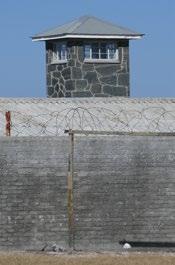



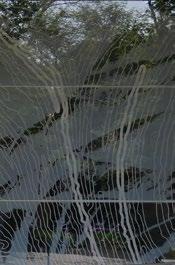
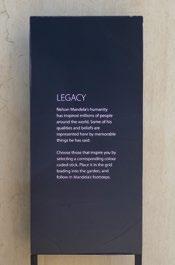
as much about absence as it does about presence.
provides the opportunity to acknowledge what kind of designs constitute Mandela’s graphic heritage. Some suggestions are offered here that invite the opportunity to examine the what, why, and how of Madiba’s graphic heritage. The prison at Robben Island, Madiba’s statue on the balcony of the Cape Town City Hall, packaging for tourism, the abstract sign for equality, Madiba’s hand print, or basic infrastructural signage at visitor locations, each provide a graphic image associated with Madiba’s graphic heritage (see above). Beyond pictorial representation, an understanding of the context determines Madiba’s presence even in his absence.
Photography is central to observing physical traces as one of several recording devices. The NaN project has benefitted from the guidance of Celeste McKenzie’s experience of working in this field, and her network of collaborators that have provided access to diverse environments which where often inaccessible to the research team.
Background
“Photographs of physical traces taken at the beginning of a research project can give all parties working on it an initial overview of the types of things they are likely to see in the field.”
John Zeisel13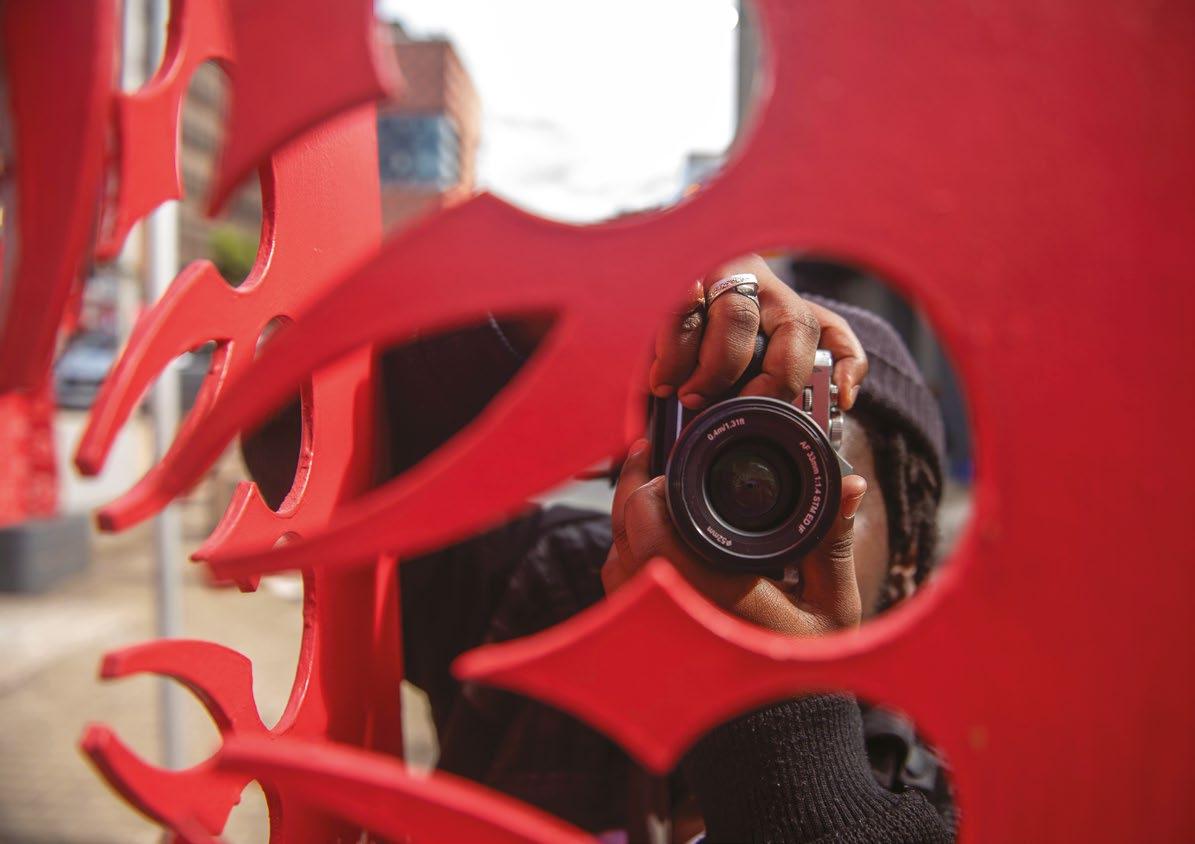 Khaya Njabulo Maling taking a photograph near Nelson Mandela Bridge in Braamfontein (Photography: Alet Pretorius)
Khaya Njabulo Maling taking a photograph near Nelson Mandela Bridge in Braamfontein (Photography: Alet Pretorius)
The photography throughout this booklet has been taken by several people featured here. They each look through the lens with different motivations, but all with a sense of inquiry. Together, the photographs document how places named after Nelson Mandela look today. The final selection of images evolved from hundreds that were taken, analysed, and synthesised to work within a composite of images depicting a sense of character. Sometimes several visits were necessary as new narratives emerged.
Celeste McKenzie is a social documentarian who uncovers the stories of communities, highlighted by her notable ethnographic study on the Khomani San. Her work is rooted in deep engagement to bridge diverse audiences to the intricate stories defining human experiences, paralleling the exploration of urban graphic heritage.
Alet Pretorius combines photojournalism with visual storytelling to capture the essence of varied environments. As a freelance photographer and lecturer, her work spans publications and educational institutions. Her documentation of significant cultural sites, like the Nelson Mandela Theatre and Mandela Village, reflects her commitment to preserving historical narratives through photography, echoing the documentation of urban heritage.
Robert Harland uses photography to document the macro, meso, and micrographic scales at which cities and urban places function through their graphic objects. He documents urban character by observing visual qualities that define why and how places look the way they do. His use of photography plays an essential role in facilitating collaboration between those seeking to define urban graphic heritage.
Fidel Thabang Mosupye brings a personal touch to his photography and video work, focusing on significant life events and community narratives. His local insight, especially in projects like the photo documentation of Nelson Mandela Park in Mamelodi, showcases his dedication to capturing authentic stories, aligning with the broader effort to document personal and communal identities in the context of urban heritage.
Yolandi Burger investigates urban graphic heritage, place branding and commemorative spaces within a South African context. Her work emphasises the impact of graphic heritage on shaping urban identities and emotional ties to places. Through photo documentation, she explores the narrative power of commemorative spaces, offering insights into cultural preservation and the dynamics of urban places.
Everardt Burger is researcher in the field of civil engineering with a keen interested in urban planning and design. He is an informal photographer and local guide for the research team. His unique blend of technical expertise and visual storytelling enhances the project, through marrying urban planning and design with the cultural and social fabric of urban places.
Market Photo Workshop Graduates Tsepiso Mahooe, Matsediso Dichaba and Khaya Njabulo Malinga documented the Nelson Mandela Bridge in Braamfontein during an informal workshop with Alet, Celeste and Yolandi. Their participation brought innovative perspectives to the project, showcasing the bridge’s significance through their lenses. Their contributions highlight the importance of individual perspectives in capturing urban narratives.
Hammanskraal, Pretoria, Gauteng, South Africa (GPS Location: 25°24’07.5”S 28°17’39.3”E)
Mandela Village is approximately 40 kilometres from Pretoria within the Hammanskraal settlement and represents a dynamic instance of post-apartheid urban development. Established on the historical Leeuwkraal farm and governed under the AmaNdebele ba Lebelo through Chief Kekana’s office, this village underwent formal integration into the Hammanskraal Local Area Committee in 1995, marking a pivotal shift towards communal inclusivity and development.14 Over the years, Mandela Village has witnessed significant infrastructural advancements, boasting essential amenities such as educational institutions, community halls, sports complexes, and a craft market. The village is further enriched by a life-sized statue of Nelson Mandela, which was unveiled in 1999. This iconic statue stands tall as a symbol of hope in the village, embodying the essence of Mandela’s name.15
Residents articulate ongoing challenges, including inadequate access to clean water, youth unemployment, and persistent crime, which underscore the complexities of urban growth within transitional societies.16 The cholera outbreak in 2023 exemplified the critical public health issues of compromised water quality.17 Despite these challenges, the residents of Mandela Village echo a common sentiment: they thrive in their community, enjoying spacious plots adorned with fruit trees despite the water dilemma. Tarred streets illuminated by streetlights and fenced houses create a sense of a harmonious community. Driving through the peaceful streets, the homes and streets of the village appear more developed than the rest of Hammanskraal. The local sports field, also named in Mandela’s honour, stands as a beacon of hope in the village. It is equipped with tennis courts and a cricket oval. Investment in local sports of the area has delivered rising tennis stars, with some securing sports scholarships to universities.18 The South African roller skating championship was even held at Hammanskraal Sports Complex in 2022.19
The exploration of Mandela Village was approached through the lens of photographic journalism, complemented by casual dialogues with the locals. Recognising potential barriers due to cultural and linguistic differences, the research team’s documentation effort was facilitated by a local interpreter to promote meaningful interactions with the locals. Among them, a local medicine woman showcased a photograph of Nelson Mandela in her dwelling, symbolising her deep respect and gratitude. She expressed how Mandela’s legacy was instrumental in the community’s ability to secure their land from the government, emphasising, “If it weren’t for Mandela and his reputation, we wouldn’t have a place to stay. Because of Mandela, we fought for this location and secured formal permission from the government, all through his name.”20 To combat crime, a local security group patrols the streets at night, which provides added security to early morning walkers commuting to work. The photographic exploration highlighted a close-knit community that regularly interacts with and supports the people of the village.
Mandela’s influence is vividly immortalised in the village’s southern end, where visual tributes cluster. A pivotal roundabout adorned with the statue of Mandela marks the entrance to various facilities named in his honour, including Mandela Hall, the Mandela Sportsground, and the Mandela Cricket Oval. These monuments, or memorials, are not only a homage to his enduring legacy but are strategically situated near the N1 highway and the Dinokeng Game Reserve, serving as beacons that draw visitors and promote tourism.




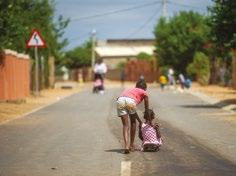


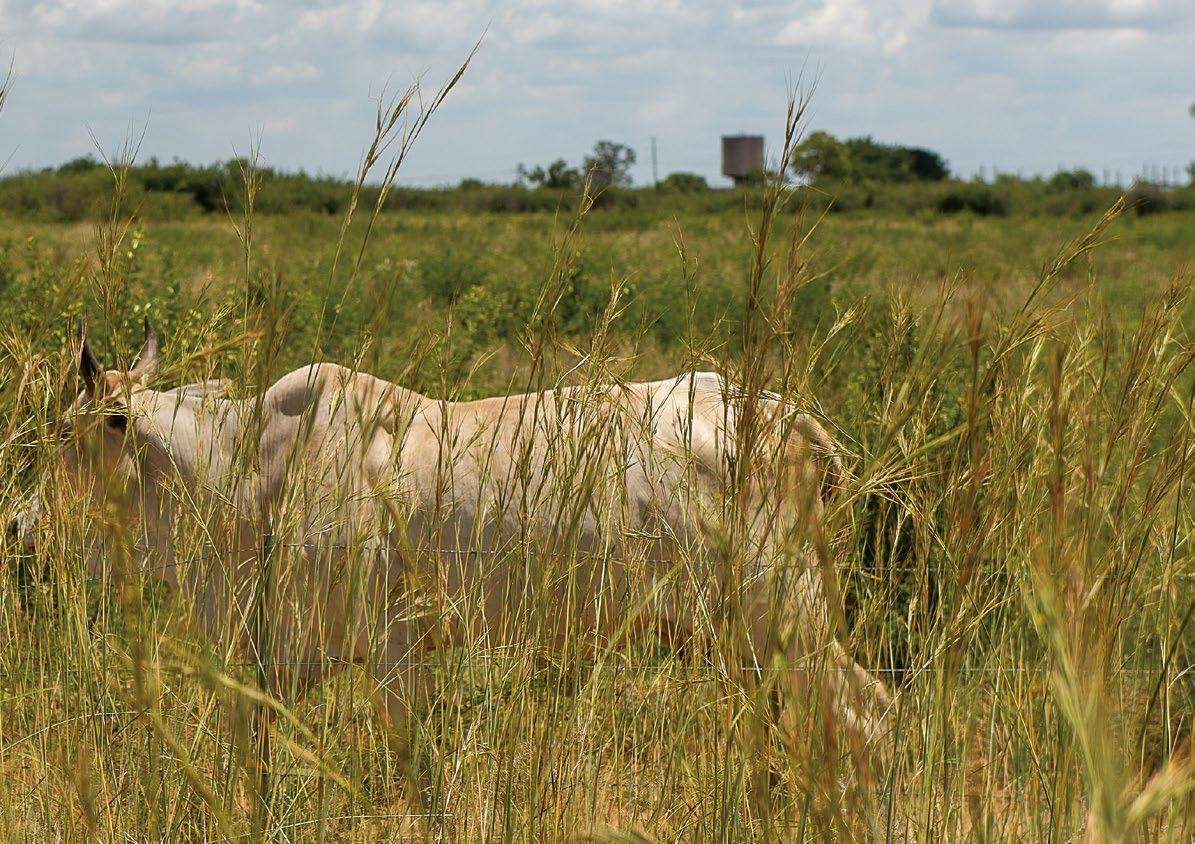
Reflecting on the significance of Mandela Village, we delve into the implications of naming a place after Nelson Mandela, exploring the potential for preferential perceptions. For the older residents, Mandela Village embodies hope, representing a hard-won home grounded in Mandela’s enduring influence.21 This sentiment, however, may not uniformly resonate with the younger generation, who might not fully grasp the historical and emotional context of their surroundings. The imagery captured from Mandela Village reveals a community that embodies the legacy attributed to its name, showcasing a collective identity forged in the spirit of Mandela’s legacy. This dichotomy between generations highlights the evolving relationship with cultural heritage, emphasising the importance of transmitting historical narratives to sustain the significance of Mandela’s legacy within the village’s identity.

Acknowledgements: We are deeply appreciative of the Mandela Village community for their hospitality, and we give special thanks to Elizabeth for her generosity in opening up her home to us as well as David that spent time with us. Our heartfelt gratitude also goes to Dumizulu Nkwanyane for being an invaluable interpreter during our visits.
Item code: ZA COM NMG-31
Title: Nike Air Shoes
Description: One pair of multi-coloured Nike Air Shoes with “Madiba” painted into the design. No date.
Size: 29cm x 11cm
Medium: Leather
See the items below related to Mandela Village in ACoM:
1) ZA COM NMFPC-0289A: Photographs of the Al-Imdaad Foundation that donated blankets to residents in Hammanskraal during 2014.
2) ZA COM MR-T-4-4-0344: Section in Hammanskraal is called Mandela Village.
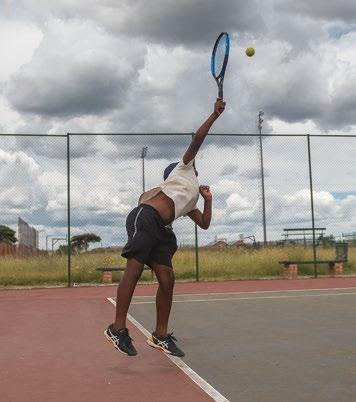

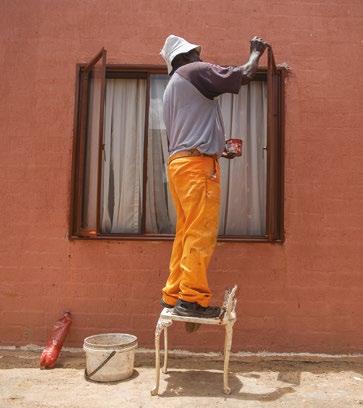

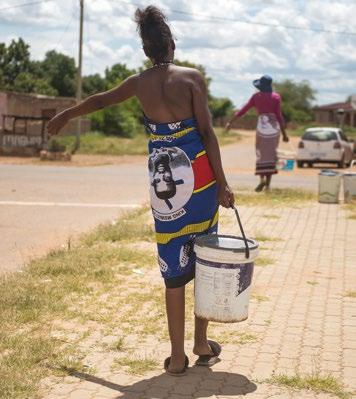
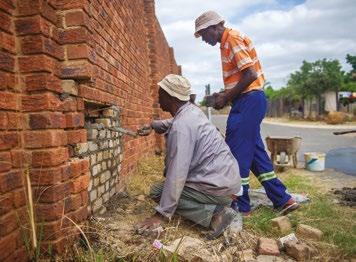
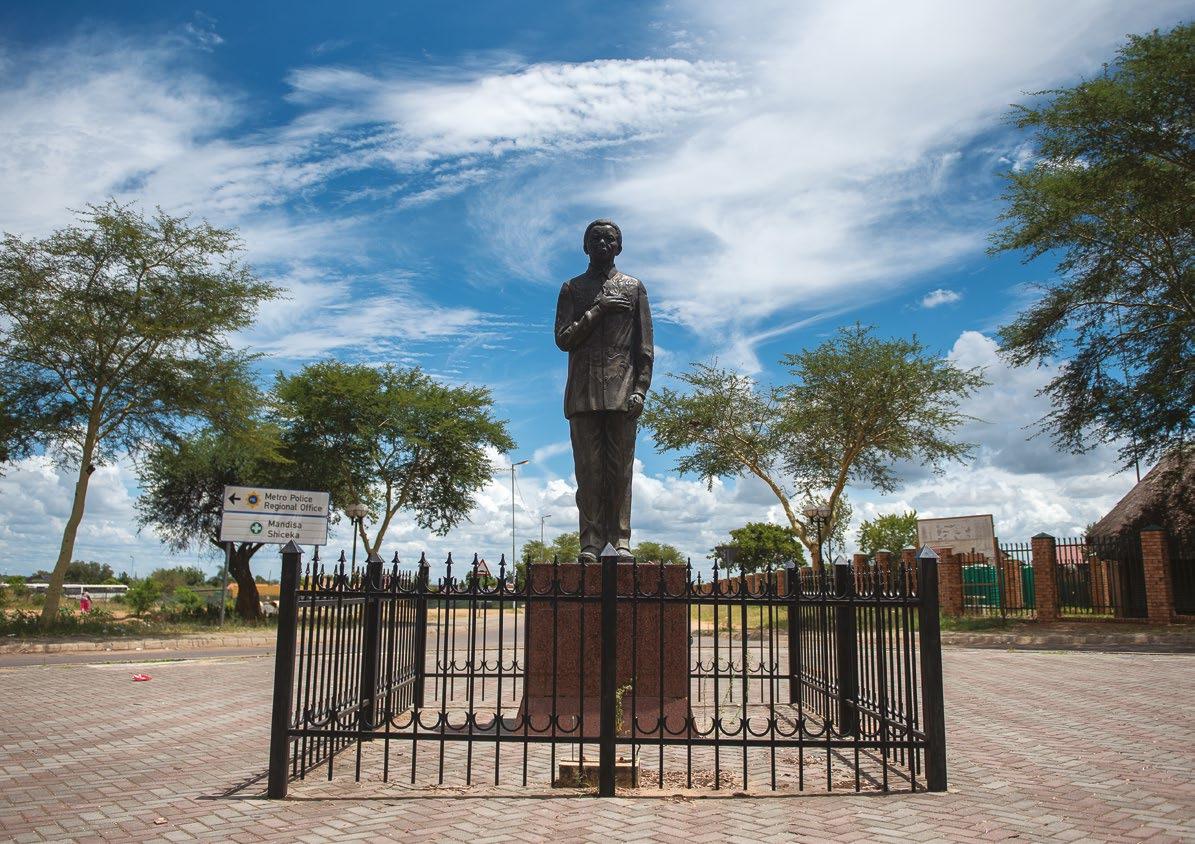
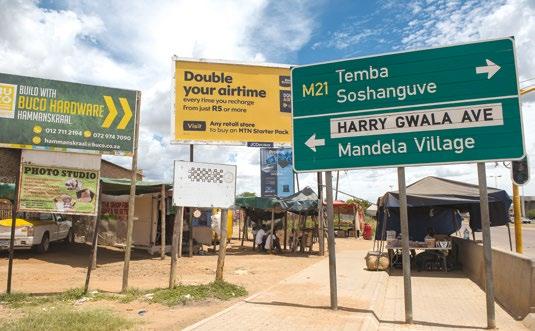
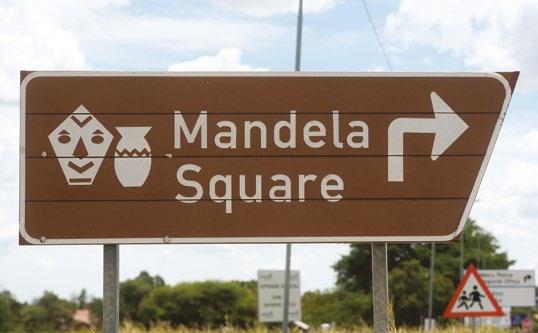

Braamfontein, Johannesburg, Gauteng, South Africa (GPS Location: 26°11’48.5”S 28°02’03.2”E)
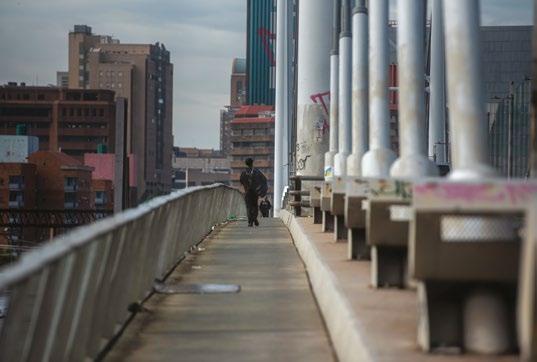
“I have taken a rest here for a moment to steal a view of the glorious vista that surrounds me, to look back where I came. But I can only rest for a moment because with freedom comes responsibilities. I dare not linger, for the road to freedom is not yet ended.”
Nelson Mandela33
The Nelson Mandela Bridge, inaugurated by Nelson Mandela on 20 July 2003, serves as a vital artery in Johannesburg, connecting the bustling business areas of Braamfontein and Newtown.22 This bridge is a significant infrastructural element and a symbolic structure reflecting Mandela’s legacy in bridging the socio-political divide in South Africa by linking the old and new as it guides traffic into the heart of the rejuvenated Johannesburg downtown.23 It is also a sign of urban transformation in Johannesburg, highlighting its place in the city’s evolving identity.24 Furthermore, we observed that the bridge is part of the iconic Johannesburg skyline featured in the interior of the South African Tourism office at Nelson Mandela Square in Sandton.
The Nelson Mandela Bridge is an engineering marvel standing as the largest cablestylised bridge in Southern Africa. It was constructed to facilitate movement between two historically and culturally significant districts.25 It won an award for outstanding civil engineering achievement by the South African Institute of Civil Engineers.26 The bridge provides pedestrian walkways alongside vehicular traffic lanes which facilitates the passage of approximately 3 000 vehicles per hour to ensure accessibility and safety for all users.27 The construction presented operational and logistical challenges due to crossing 42 railway lines without disrupting traffic.28 This iconic landmark utilised vast materials, including 4,000 cubic meters of concrete and 1,500 tons of steel, to ensure its lightweight yet stable design.29 The lighting on the bridge was upgraded ahead of the FIFA 2010 World Cup hosted in South Africa as a tribute to Mandela’s enduring influence on South Africa’s journey towards democracy and unity through its rainbow-coloured lights that lit up the Johannesburg skies.30
The academic discourse around the Nelson Mandela Bridge extends to its impact on community perception and identity, as evidenced during an informal workshop in 2023
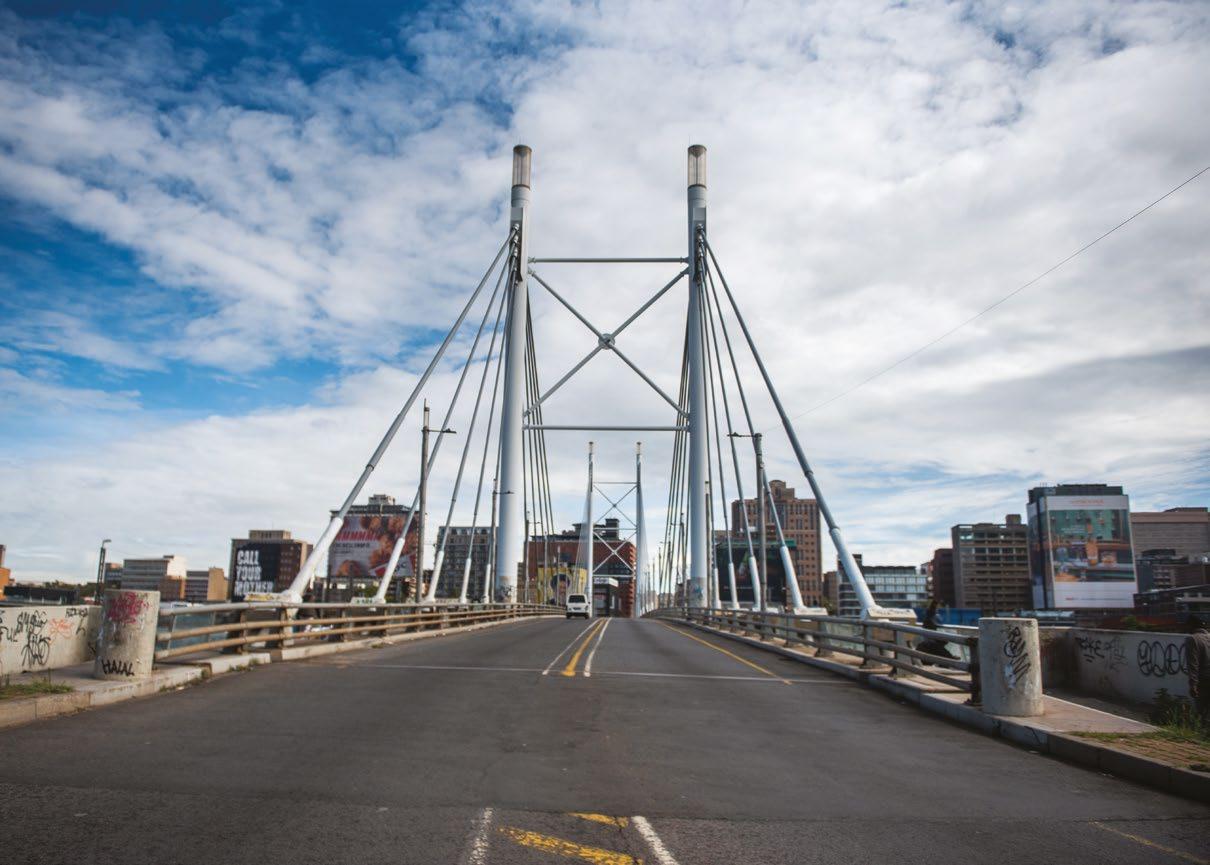


involving three graduates from the Market Photo Workshop in Newtown, Johannesburg. Their engagement with the bridge through a photographic exploration unveiled the multifaceted narratives around this landmark, oscillating between its historical resonance and contemporary challenges, including safety concerns. The bridge serves as a mere passage from Braamfontein to Newtown for these students. They paid little attention to its historical significance in the few seconds they spend crossing the bridge. However, a shift occurred when these individuals were introduced to graphic heritage and the importance of places named after Nelson Mandela.
The photographic documentation of the bridge unveiled a neglected environment with a trail of informal messages, scattered trash, and broken glass. The only formal indication of the bridge’s name is a road sign from Bertha Street just before crossing the structure. One of the workshop participants highlighted the need for signage explaining why the bridge bears Nelson Mandela’s name since the historical value may only be apparent to some. The rainbow-lit bridge that is advocated on many tourist websites and image searches are outdated since these colourful lights have not worked for more than a decade. The City of Johannesburg acknowledged the need for tighter security measures and structural repairs due to traffic accidents and vandals that stole the electricity cables and damaged metal elements on the bridge only a mere year after the World Cup. 31 Unfortunately, the lights were never replaced to counter future vandalism.32
These insights prompt us to ask whether the bridge, bearing the name of a respected leader, can still serve as a powerful reminder of the nation’s journey toward unity. In the years since Mandela’s inauguration, the bridge’s symbolic weight may have
faded for some. Still, the hope is that those engaged in projects like this will become ambassadors, educating others on the ongoing significance of the Nelson Mandela Bridge.
Acknowledgements: We extend our heartfelt thanks to the graduates of the Market Photo Workshop, Matsediso Dichaba, Khaya Malinga, and Tsepiso Mahooe, for their engagement in the informal workshop alongside our research team, led by Alet Pretorius. We’re also grateful to ‘The Playground’ who provided us access to their

ZA COM NMG-470
2010 FIFA World Cup Medal. A gold plated 2010 FIFA World Cup Medal with an image of the world cup carved into its surface. Inscribed: Nelson Mandela Winner of the 2010 FIFA World Cup 4cm x 16cm x 18cm
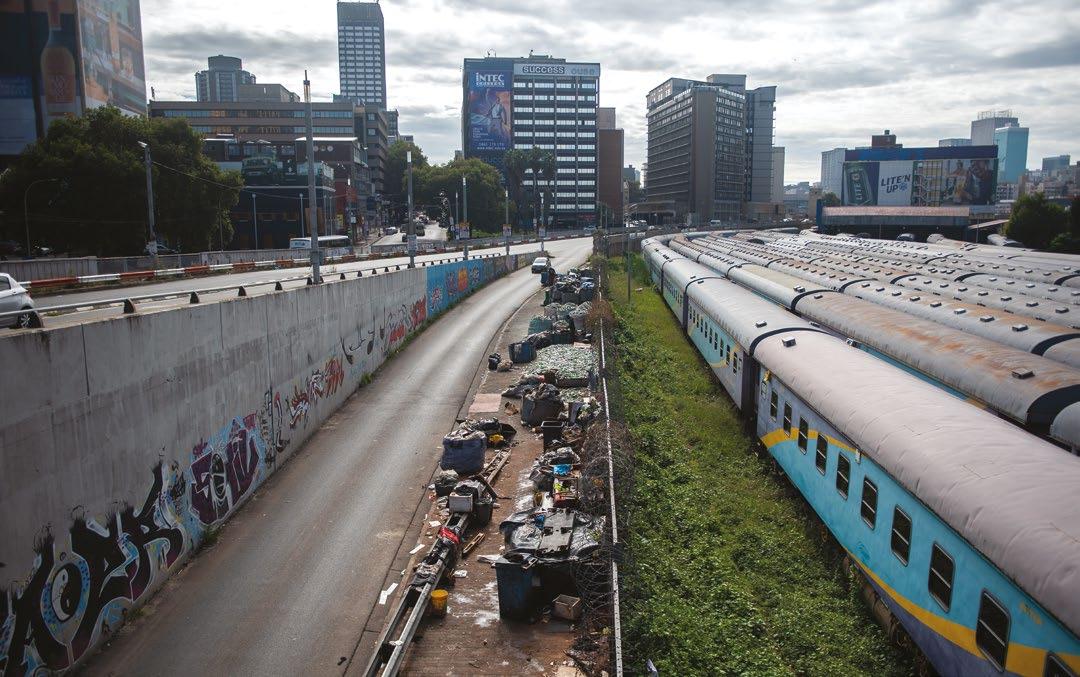
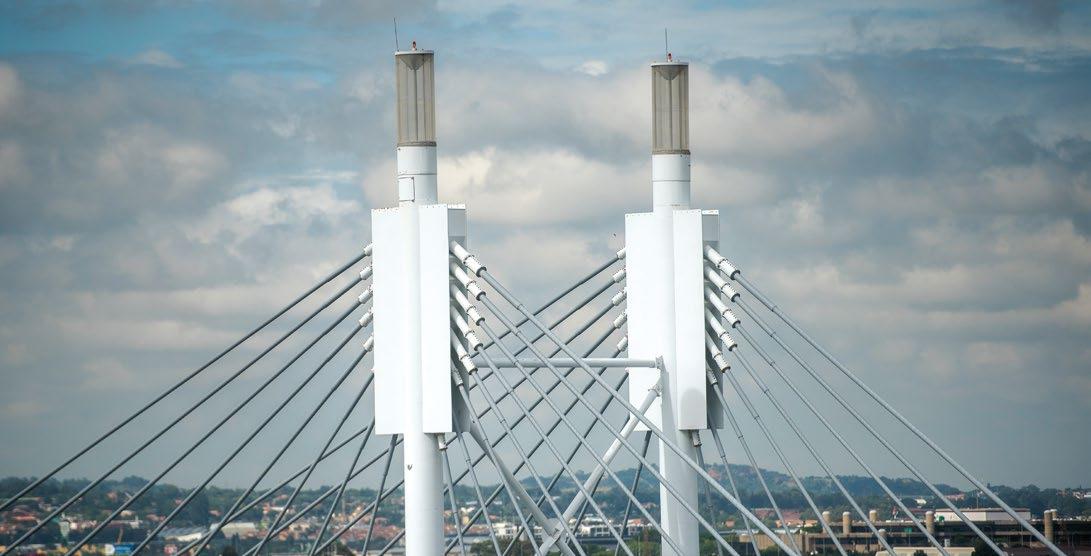

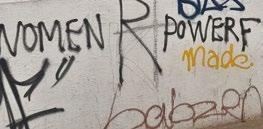
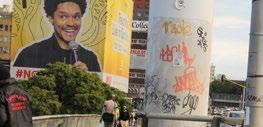


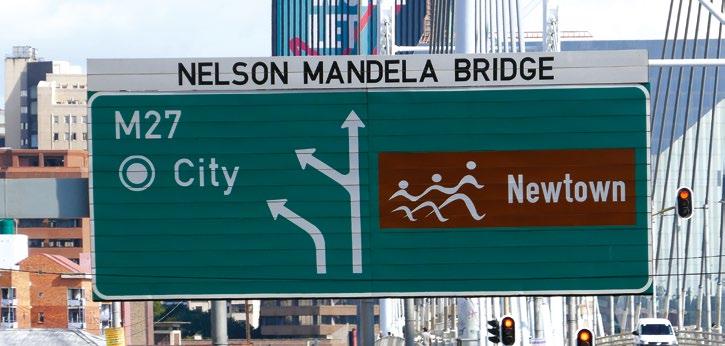

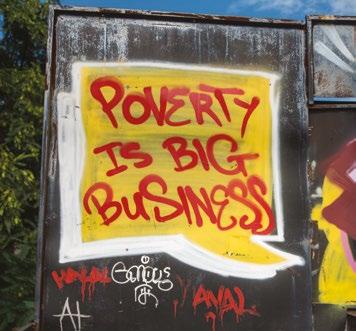

Braamfontein, Johannesburg, Gauteng, South Africa (GPS Location: 26°11’28.4”S 28°02’18.9”E)
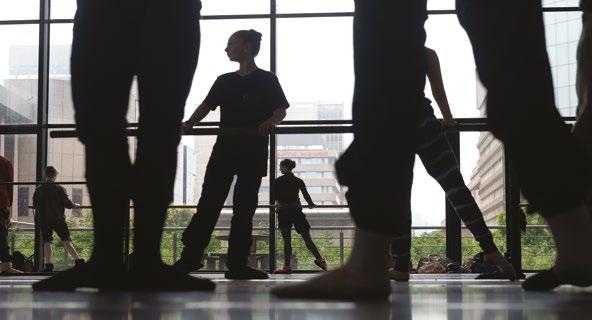
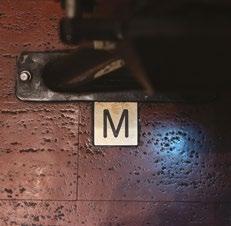

On top of Braamfontein Hill is the high-profile landmark called the Johannesburg Civic Theatre, built in 1962.34 Undergoing significant renovations in 1987 and re-emerging in September 1992, it emerged as a globally recognised technical marvel in the theatrical domain.35 In 2009, the theatre was rechristened, the Joburg Theatre, with its main theatre named in honour of Mandela, marking it as a unique tribute to his legacy, with Mandela himself endorsing this tribute.36 The Nelson Mandela Theatre (also called the Mandela Theatre) is the largest in the complex, with 1,069 seats. It serves as a central hub for cultural expression, hosting an array of esteemed productions ranging from Broadway musicals to comedies, including Janice Honeyman’s renowned pantomimes.37 With its red seats, the Mandela Theatre symbolises a beacon of local and international artistic talent, fostering a space where magical moments and communal experiences are cultivated through performance art. The first Nelson Mandela Annual Lecture was hosted here and several thereafter underscoring the role of this place in facilitating discourse on global peace and social justice.38 The theatre is also home to the Joburg Ballet, a professional school developing the next generation of South African ballet dancers. The Nelson Mandela Theatre’s engagement with the arts and performance serves as a vehicle for societal transformation, embodying Nelson Mandela’s legacy of leveraging cultural mechanisms for societal enhancement.39 This dedication manifests in the rigorous attention to detail observed in every production, where the cast and crew’s commitment to excellence ensures that each performance transcends mere entertainment to offer an enriching, immersive experience for the audience.40 Such a strategy underscores the theatre’s pivotal role in fostering creativity within the community. Beyond its function as an entertainment venue, the Nelson Mandela Theatre

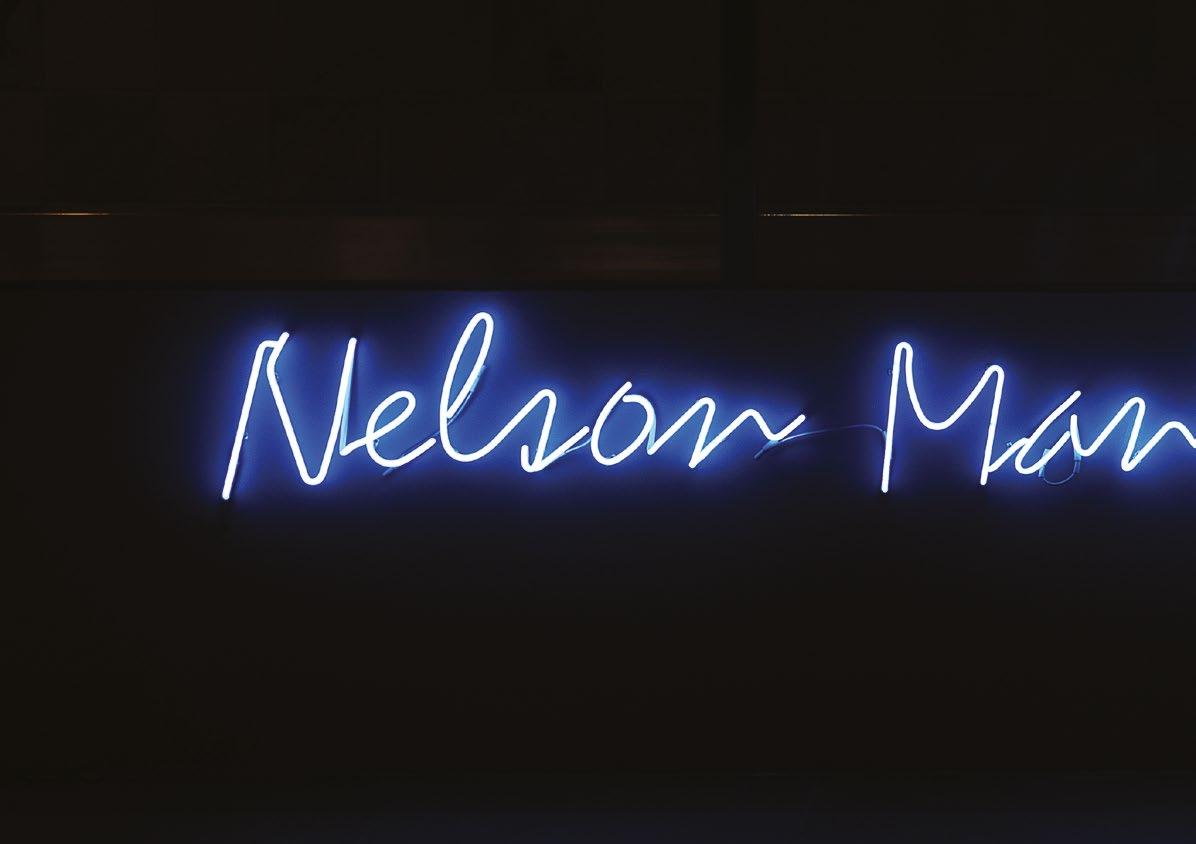
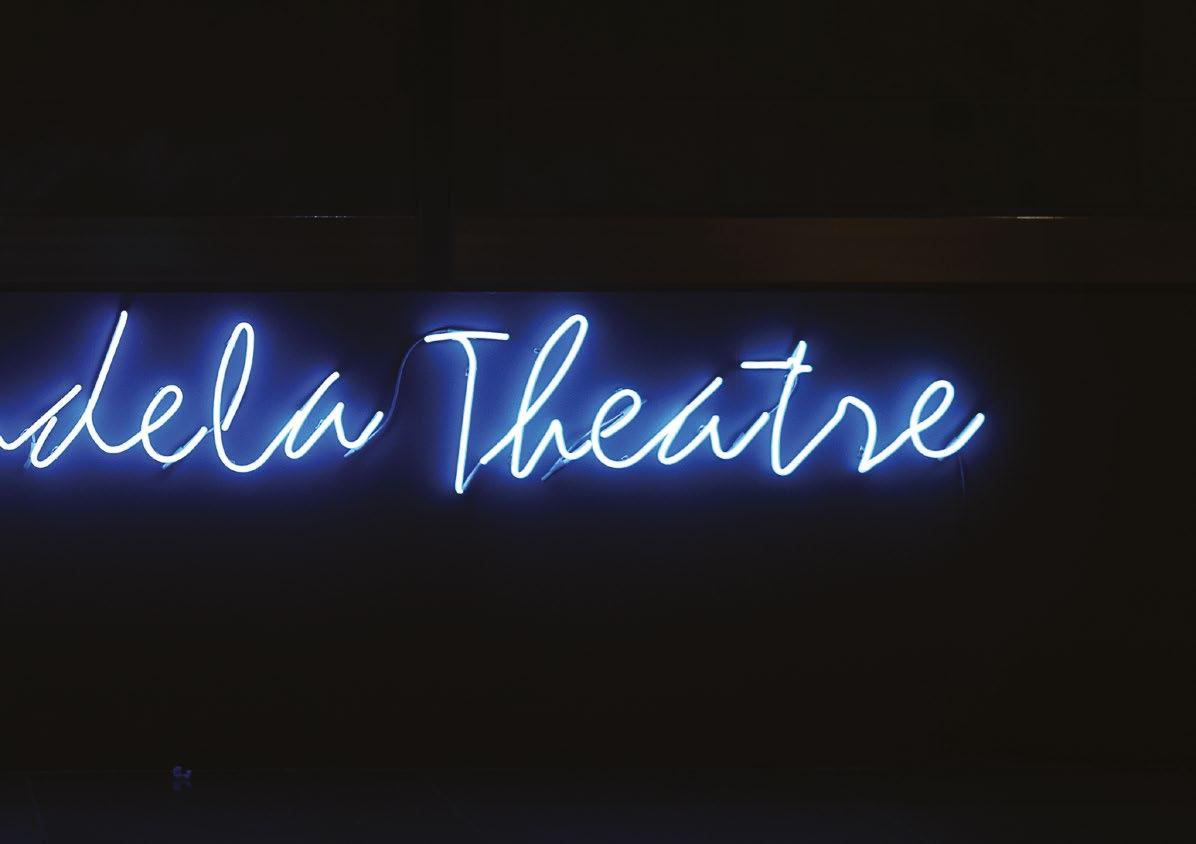
emerges as a beacon of Johannesburg’s diverse cultural fabric, inviting patrons to immerse themselves in the arts in a space that pays homage to one of South Africa’s most esteemed icons. Additionally, the theatre contributes to Johannesburg’s stature as a critical centre for arts and entertainment, underscoring the city’s profound regard for these sectors.41
The photographic exploration of the Nelson Mandela Theatre reveals a striking balance between contemporary and classical design elements. The theatre’s exterior is marked by blue neon signage, a modern touch that reflects Johannesburg’s lively nightlife and the city’s energetic atmosphere.42 The colours contrast sharply with the interior’s luxurious red velvet, a nod to traditional theatre aesthetics. The colour red extends beyond its usual association with the entertainment industry, symbolising the profound sacrifices and struggles endured during South Africa’s fight for independence, a sentiment echoed in the hues of the national flag.43 This interplay of colours enriches visitors’ visual experience and embeds the theatre within the broader South African history and identity narrative. The blue neon signage acts as a beacon, attracting attention to the theatre’s dynamic presence within Johannesburg’s urban landscape, underscoring its significance as a cultural and social hub. Upon entering the Joburg Theatre complex, visitors are guided by signage to the four distinct theatres, including the Nelson Mandela Theatre. This organisational scheme ensures that each visitor’s journey through the complex is seamless, allowing easy access to various performances and events that cater to diverse interests and tastes. This thoughtful design and navigational approach enhance the overall experience, making the Joburg Theatre a cornerstone of cultural engagement in Joburg.
Acknowledgements: Our gratitude goes to the staff of the JoBurg Theatre for granting us the chance to document the Nelson Mandela Theatre. We are also thankful for Nelson Mandela Foundation who gave permission to use the photograph of the 2023 Annual Nelson Mandela Lecture.
From the Archive at the Centre of Memory (ACoM)
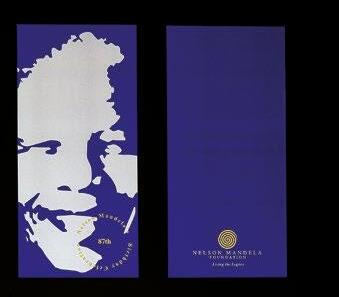
Item code: ZA COM NMFPC-AL2005

Title: Annual Lecture by Professor Wangari Mathaai and Nelson Mandela’s 87th birthday celebration
Size: 55cm x 42cm
Medium: Printed paper
See the items below related to the Nelson Mandela Theatre in ACoM:
1) ZA COM MR-T-4-2-0305: Nelson Mandela Theatre at the Joburg Theatre Complex, previously known as the Johannesburg Civic Theatre.
2) NMFPC-1.13.5-20: Nelson Mandela with the CEO of Johannesburg Civic Theatre, Bernard Jay, 2002.01.30, Braamfontein.
Named after Nelson
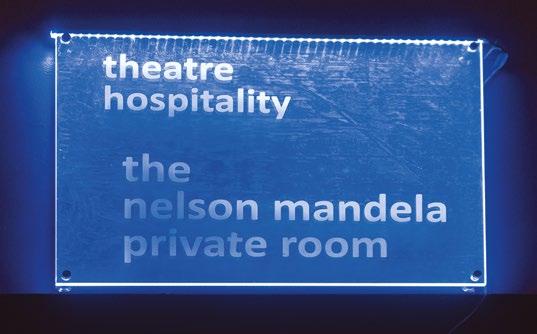
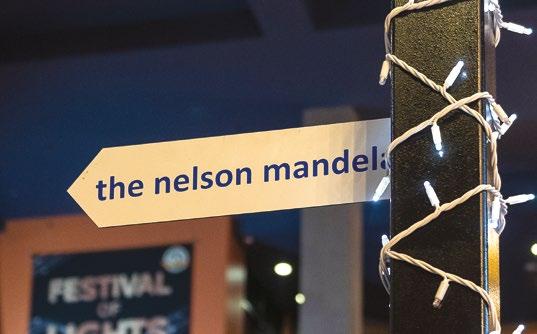



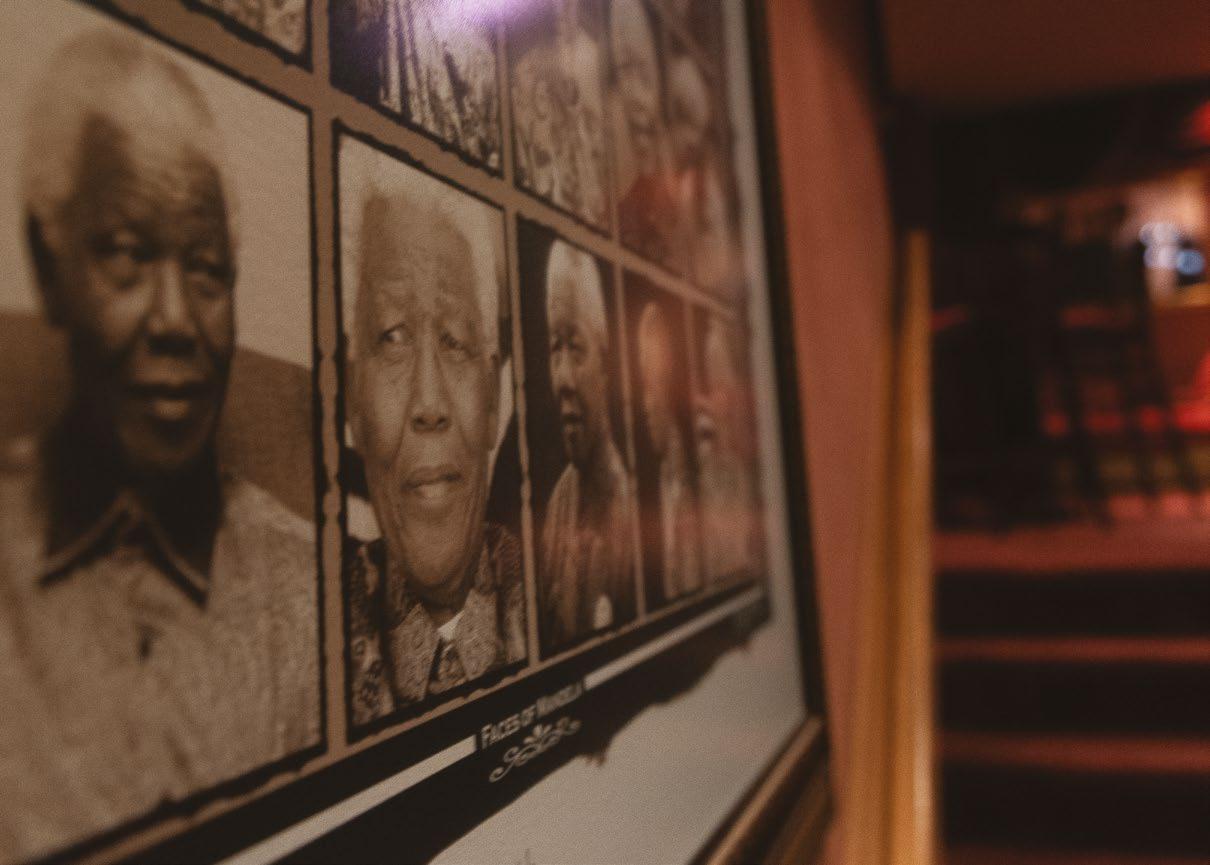
Houghton, Johannesburg, Gauteng, South Africa (GPS Location: 26°08’54.7”S 28°03’29.5”E)
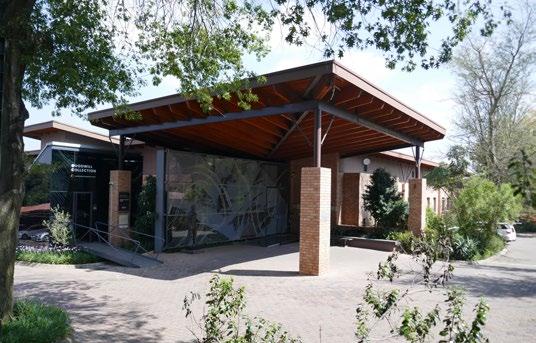

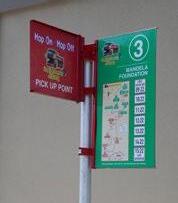
The Nelson Mandela Foundation is a source of inspiration and dedication to the legacy of Nelson Mandela and is in Houghton, Johannesburg. The Foundation was established by Nelson Mandela in 1999 after serving one term as South Africa’s first democratically elected president. It functioned for the first five years as Mandela’s post-presidential office. Then it transitioned to a non-profit organisation focused on memory, dialogue and legacy work by creating the Nelson Mandela Foundation.44 The Nelson Mandela Foundation (the institution) is located in the Nelson Mandela Centre of Memory (the place) in Houghton, Johannesburg.
The Foundation is the custodian of a vast archive called The Archive at the Centre of Memory (ACoM) that captures the endless, dispersed, and fragmented story of Nelson Mandela’s life. The Foundation responds to hundreds of queries each year about Mandela, ACoM and the use of intellectual property.45 The foundation understands the importance of continuous recording, fact checking, accessibility, and preserving this rich resource. Extensive measures have also been undertaken to preserve and digitise the physical collections to international standards to promote accessibility of these items for all.
The Foundation seeks to help build a just society that values diversity, learns from the past, and pays attention to the many voices that have shaped our shared history. Its dedication to providing an integrated and dynamic information resource on Mandela’s life and times forms the basis of its mission. The Foundation promotes long-term solutions to the pressing social issues of our day and preserves history. By doing thorough research, analysis, and assessment, the Foundation aims to establish itself as a reputable change agent connecting with people in South Africa and worldwide. The
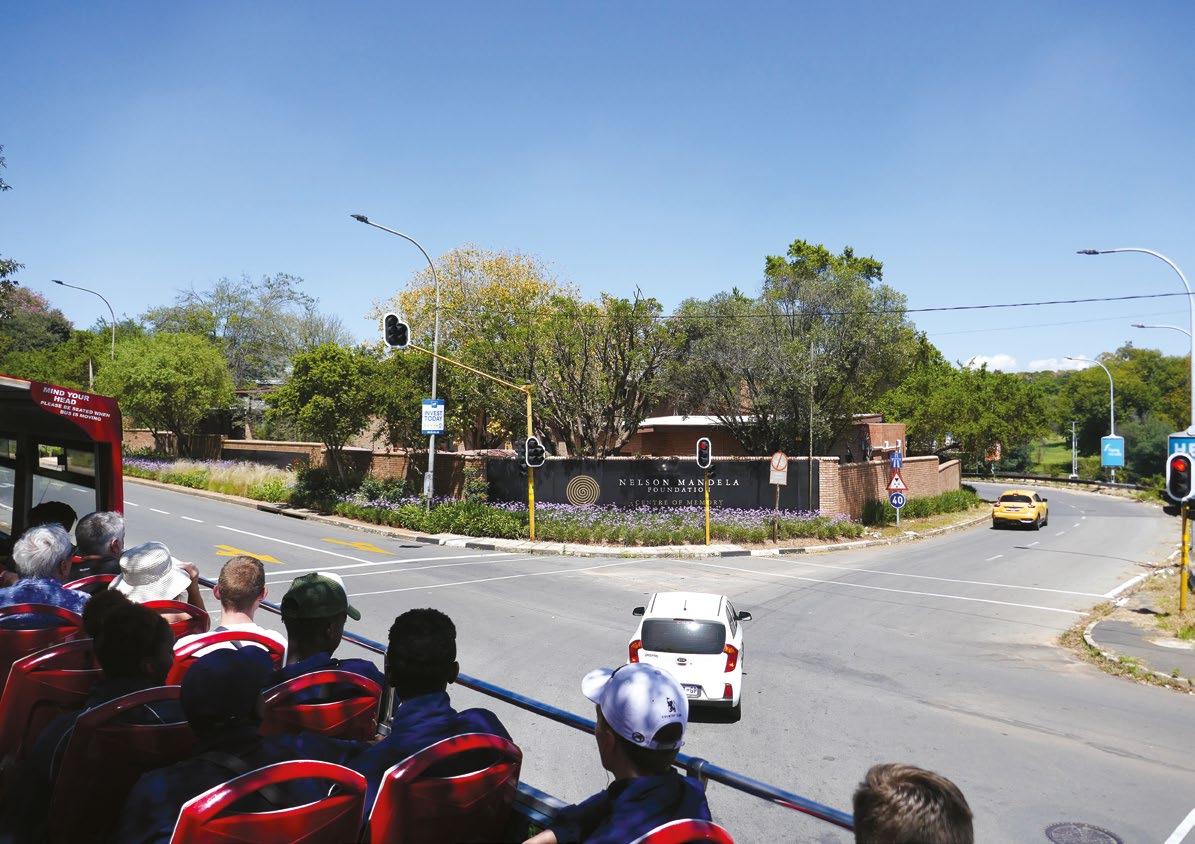

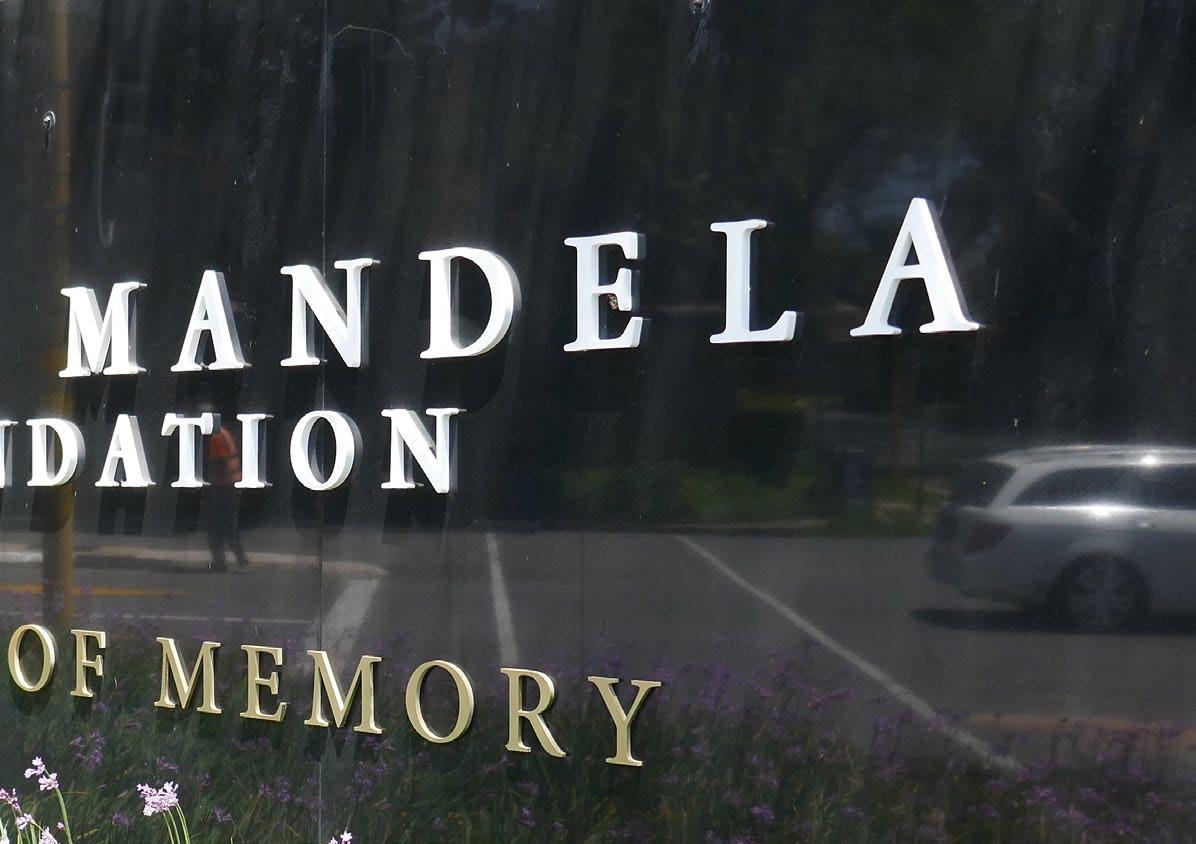
vehicles through which this work is undertaken are Dialogue and Advocacy, Archive and Research and lnternational Mandela Day.46
The Nelson Mandela Foundation narrates its commitment to effecting societal transformation. This institution serves as a dynamic memorial to Mandela’s vision, bridging historical insight and forward-looking dialogue. ACoM is an integral part of the Foundation and provides a rich tableau of Mandela’s journey, offering exhibitions, scholarly resources, and educational programmes. This venue is replete with graphic depictions that capture Mandela’s essence, reinforcing its mission as a bastion of knowledge and a catalyst for change, encapsulating the spirit of one of the world’s most influential leaders. Visitors are welcomed by a smaller replica of the Mandela statue from Sandton, set against the distinctive design of Mandela’s fingerprint on the glass facade. Inside, a rich tapestry of Mandela’s graphical representations unfolds, affirming the Foundation’s role as an educational beacon and an agent for societal change.
Acknowledgements: We express our sincere appreciation for the continued partnership with the Nelson Mandela Foundation and their consent to feature the foundation within the Named after Nelson project.
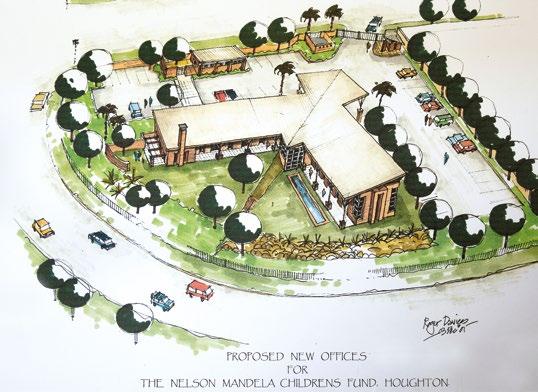
Item code: ZA COM NMG-685
Title: Nelson Mandela Foundation office design includes a model.
See the items below related to the Nelson Mandela Foundation in ACoM:
1) ZA COM RCB-1259: The Nelson Mandela Foundation Prospectus.
2) ZA COM MR-S-1070: Address at the Opening of Mandela House (now the Nelson Mandela Foundation).
Description: A print of a proposed design for new offices for the Nelson Mandela Foundation (now Nelson Mandela Centre of Memory) in Houghton (incorrectly labelled).
Size: 73cm x 97cm
Medium: Printed paper [original in watercolour and ink]

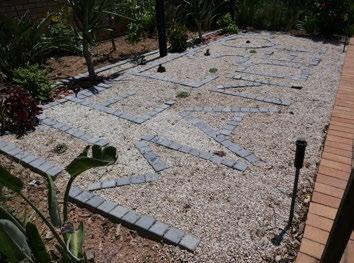
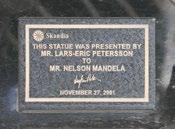
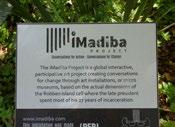
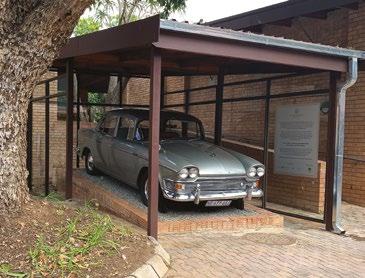
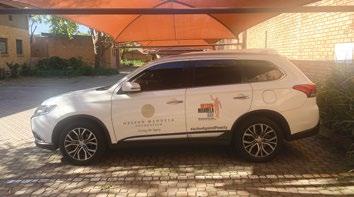



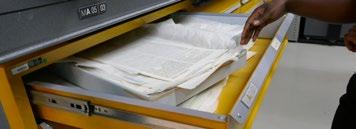
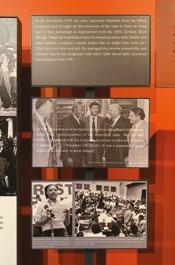


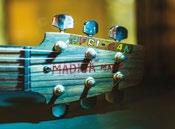




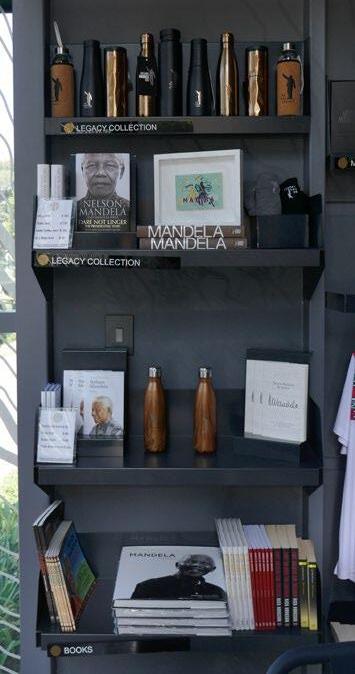


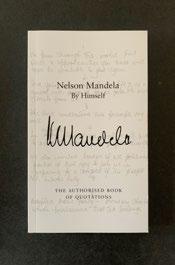

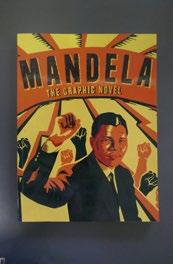

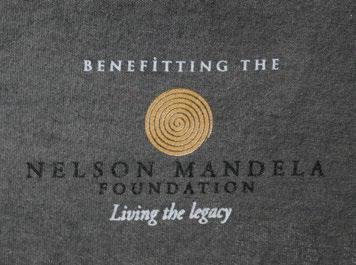
Pretoria, Gauteng, South Africa (GPS Location: 25°43’00.0”S 28°22’14.7”E)
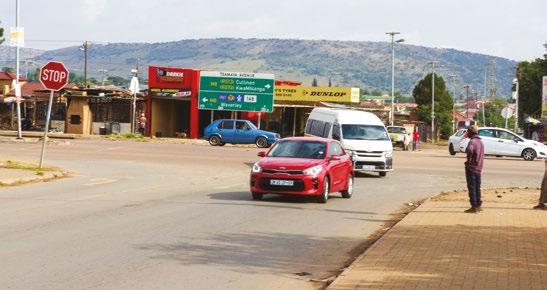

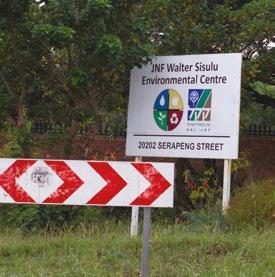
Established on the farm Vlakfontein in 1945, the township of Mamelodi emerged north of Pretoria as a settlement for temporary labourers. Its name, adopting the Tshwana phrase for ‘Mother of Melodies’ in 1950, encapsulated a new identity for the community as it shifted from a transitory labour camp to a permanent dwelling for many post-World War II workers.47 Now, Mamelodi thrives as a township abounding in historical richness and cultural diversity, characteristic of the evolving urban landscape of South Africa.48 The fabric of Mamelodi is one of contrast, where expansive malls stand against the backdrop of simple streetside businesses. This juxtaposition captures the essence of the township’s vibrant life, where the energy of local music intermingles with the daily hum of street activity. The township’s architecture, primarily composed of low-quality housing, reveals the disparities in access to essential services, reflecting broader socio-economic narratives within South Africa.
Mamelodi is also home to a network of institutions that cater to the education and health of its residents, as well as recreational spaces such as Nelson Mandela Park. This park, situated on Tsamaya Avenue opposite the Mamelodi Regional Hospital, resulted from the Greening of Mamelodi initiative, designed to offer a communal recreational environment. The park serves as a leisurely retreat with its tree-lined spaces and playgrounds and plays an integral role in connecting the community.49 50 The park’s opening in 1996 by Nelson Mandela marked an important moment, symbolising the community’s revival and the desire to beautify their surroundings in the spirit of the new patriotism that Mandela’s leadership inspired. Despite the evident wear and deterioration over the years, Mandela’s aspirations for the park to be a place of joy and learning for children are evident in the ongoing use of the park’s facilities.
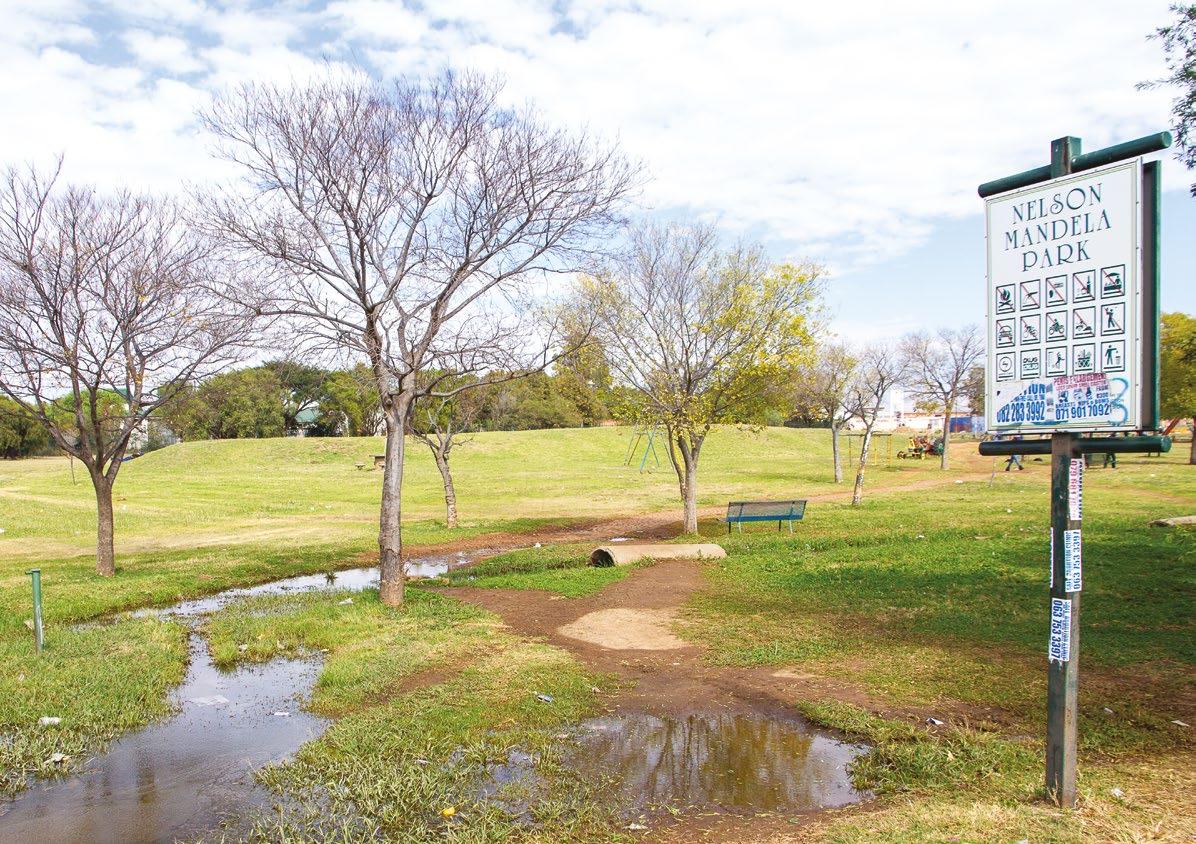


An analysis of the photographic documentation highlights the park’s continued relevance to Mamelodi East’s community life. It remains a space for social gatherings and sports and a thoroughfare to the local hospital, although the park faces challenges in maintenance and safety. The broken playground equipment and absence of proper fencing reflect the need for revitalisation to ensure the park’s safety and functionality. Interestingly, the park’s designation as a space honouring Mandela is minimal. This presents a stark functional role, with the park facilitating daily life rather than a commemorative space. The prevalence of English in signage, despite the linguistic diversity of Mamelodi, suggests a universal approach to communication within this multifaceted community.
Ensuring the park’s upkeep and enhancing the visibility of Mandela’s legacy is essential to preserving the place’s significance beyond its current use, honouring the memory and principles of Mandela for future generations. It also exemplifies the importance of public places in urban communities – not just as places of leisure and play but as embodiments of collective memory and identity. The park’s narrative is a microcosm of the broader South African experience, reflecting the nuances of postapartheid urban development, community resilience, and the challenges of cultural preservation within evolving townships.
See the items below related to the Nelson Mandela Park in ACoM:
1) ZA COM MR-S-417: President Nelson Mandela’s speech at the Official Opening of the Nelson Mandela Community Park in Mamelodi.

Item code: ZA COM NMG-931
Title: ANC Election Poster
Description: Poster with Madiba and the children written “A better life for all” signed by Madiba - Dated 5/4/1994.
Size: 115cm x 76cm
Medium: Printed paper
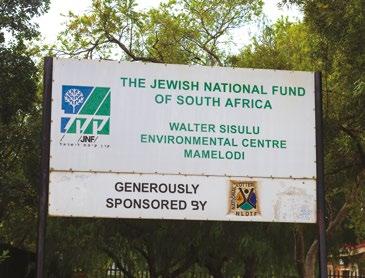
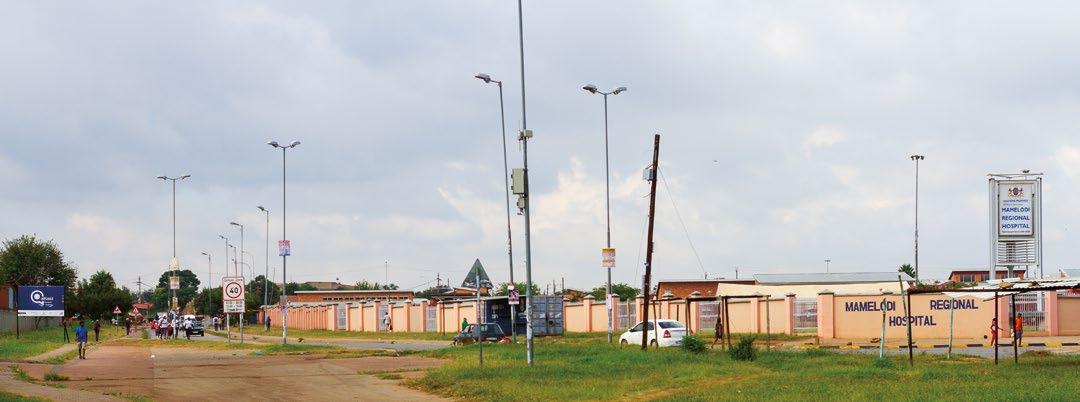


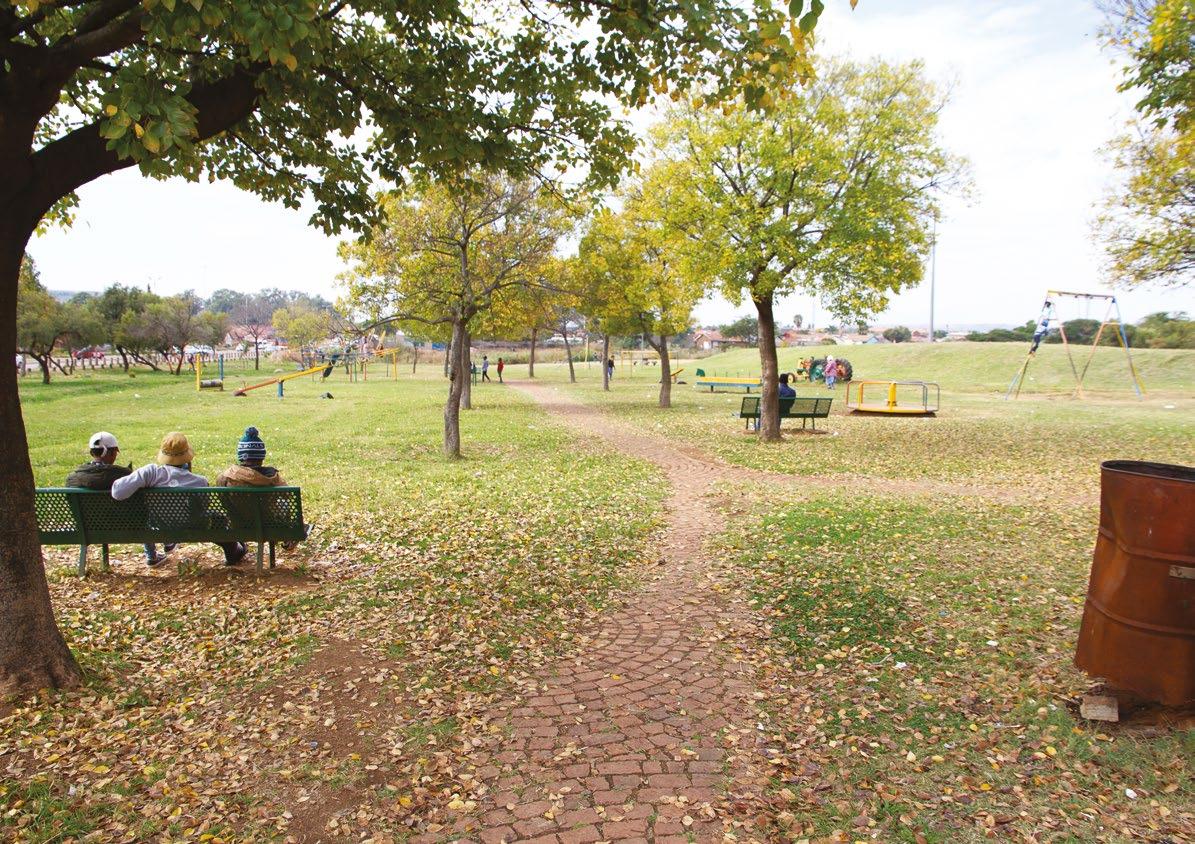


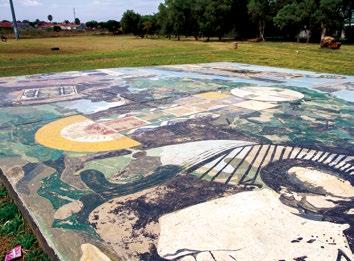
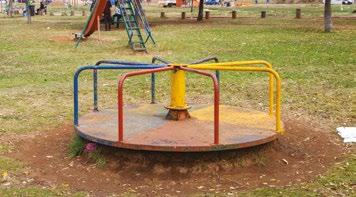
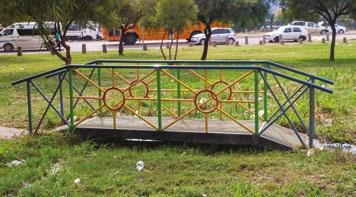

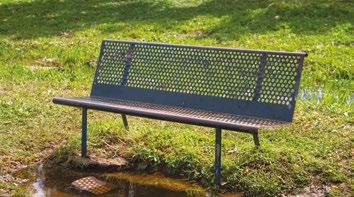

Sandton, Johannesburg, Gauteng, South Africa (GPS Location: 26°06’26.7”S 28°03’17.3”E)


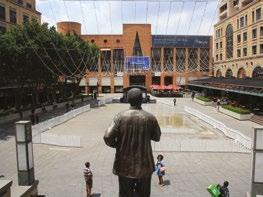

The suburb of Sandton has a varied history, from where the San, a hunter-gatherer society of Southern Africa, used to live to Africa’s richest square mile.51, 52 The suburb was established in 1906 and combined the two areas: Sandown and Bryanston.53 In the 1900s, the area was a farming district, but due to the region’s rapid urbanisation, it formally became part of the city of Johannesburg in the 1960s.54 The suburb is a financial, business, tourism, and retail hub for wealthy South Africans and international visitors.
The square was formally known as Sandton Square but was renamed in 2004 in honour of Mandela and as part of the 10th anniversary of the country’s democracy55 – an example of place (re)naming to reflect a shift in power and whose history and heritage is celebrated. The square was selected for its geographic location in the economic hub of South Africa.56 The place is a pseudo-public space co-owned by two companies, ‘Liberty Group Limited’ and ‘Liberty Two Degrees’.57 As an open-air piazza in Sandton’s Central Business District centre, it is said to incorporate ‘local heritage with international flair’ and provide visitors with glamorous shopping, dining, and leisure experiences.58
The square is in the heart of the Nelson Mandela Square Shopping Centre, which offers a diverse collection of retail and lifestyle choices with an assortment of boutiques, shops, and salons. The centre is next to the iconic Sandton City, which stands as Africa’s most renowned shopping destination, shaping the skyline of Sandton.
This distinguished locale hosts more than 372 of the world’s most sought-after retail brands, capturing the essence of world-class shopping, dining, and leisure in a glamorous setting. Opposite the road is the Sandton Convention Centre, the premier event venue in South Africa providing prestigious multi-use event spaces in the financial hub of Johannesburg. The square has restaurants around the edges, a fountain in the
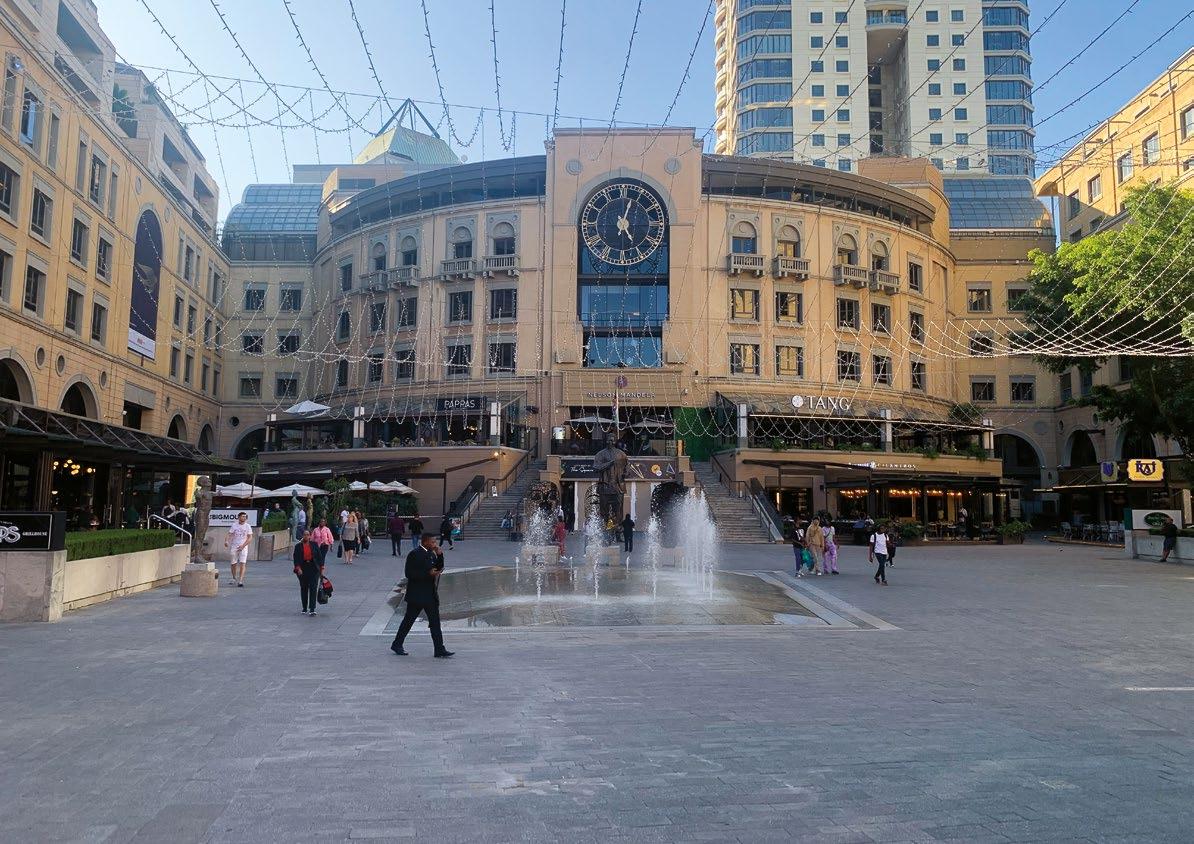
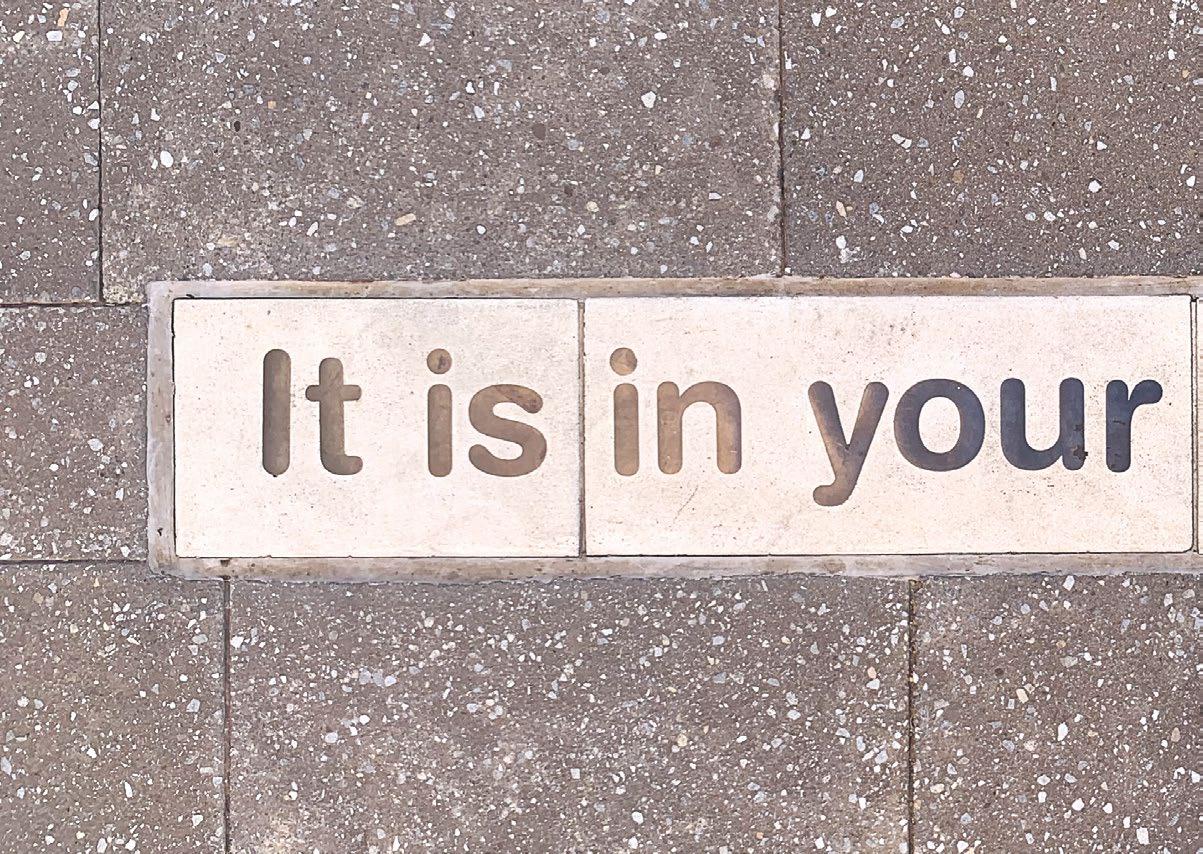

centre, a line of trees and greenery to the one side where visitors often seek shade, and a theatre that offers entertainment. Its main visual attraction is a giant statue of Mandela overlooking the square, where many people will pose for a photograph in memory of their visit. The place provides a visually rich representation of Mandela through many statues, inscriptions, timelines, and images – some of which offer interactive engagement opportunities.
Nelson Mandela Square incorporates four key heritage elements associated with Mandela. The bronze statue, depicting a joyful Mandela performing the Madiba Jive, symbolises South Africa’s post-apartheid success. A smaller version of this statue is located at the Nelson Mandela Centre of Memory. Nearby, the iMadiba project presents a timeline of Mandela’s life. The Remembering Madiba project seamlessly integrates Mandela’s speeches and quotes through touch screens and QR codes throughout the square. Additionally, the square itself functions as a graphic element. The square, regularly cleaned to maintain its pristine state, takes on new roles—hosting live music sessions within temporary structures, providing shaded areas for intimate conversations, and becoming a canvas for the spontaneous playfulness of children around the fountain.
Acknowledgements: We extend our thanks to the marketing department at the Nelson Mandela Square Centre for granting us permission to document the square.
See the items below related to Nelson Mandela Square in ACoM:
1) ZA COM NMFPC-0069: Unveiling of a statue of Mandela on the renamed Nelson Mandela Square in Sandton, Johannesburg, in 2003.
2) ZA COM MR-T-7-5-2249: Replica of the bronze Nelson Mandela statue in the Nelson Mandela Square, Sandton.
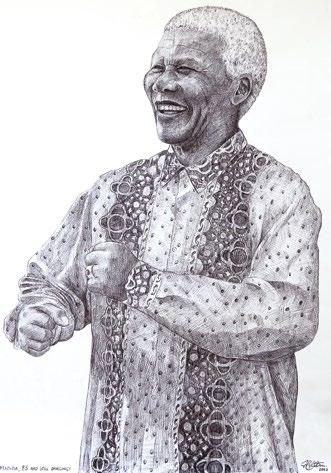
Item code: ZA COM NMG-459
Title: Madiba, 85 and Still Dancing!
Description: Pencil and ink drawing of Nelson Mandela laughing and doing a Madiba jive.
Size: 29.5cm x 41.5cm
Medium: Pencil and ink


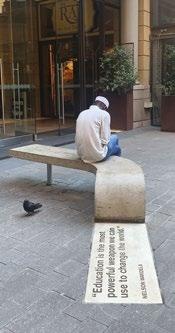


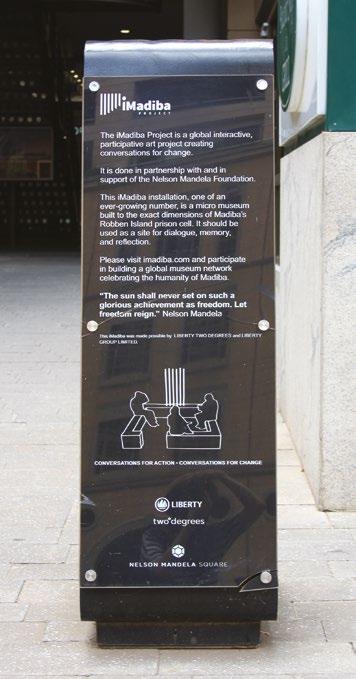



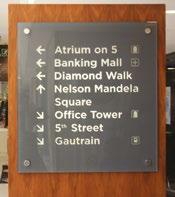
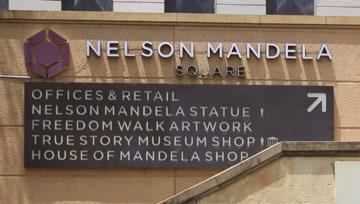



Detailed location maps serve a vital foundational element in illustrating the geographical context of each place documented (places are document with ‘A’ on the respective maps). These maps are meticulously designed to do more than just pinpoint locations; they reveal the land usage patterns and highlight the amenities nearby, including both significant and lesser-known access routes, pedestrian pathways, bodies of water, and railway lines. understood.
This cartographic detailing is essential in providing a visual understanding of the place’s role and significance within the community. It offers insight into how these places function and how the infrastructure support the daily lives of the community who uses these places . Through these maps, we aim to paint a comprehensive picture of the sites named after Nelson Mandela, ensuring that their stories and contributions to the community’s fabric are both celebrated and understood.
For urban planners and civil engineers, the use of these detailed location maps is invaluable since it provides a comprehensive understanding of geographical contexts, land use patterns, existing infrastructure, and community needs. It aids planners and designers to make informed decisions on infrastructure development, future land use zoning and enhancement of urban spaces and places. Specifically, in the context of locations named after Nelson Mandela, these maps underscore the cultural and historical significance of these places with the hope that future urban development respects, integrates and enhance the heritage of South Africa.
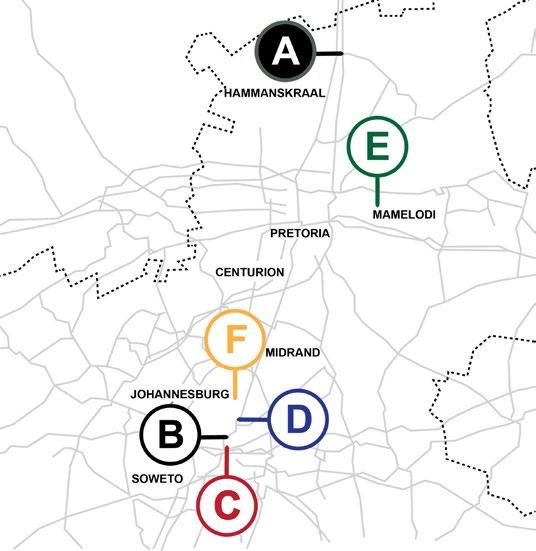
To view the location maps at a larger and more detailed scale please visit the project’s website at www.namedafternelson.lboro.ac.uk. KEY A

KEY
A — Mandela Village, Hammanskraal
B — Dinokeng Nature Reserve
C — Jubilee District Hospital
D — Kudube Primary School
E — Makgetse High School
F — South African Police Service: Temba Station
G — Tshwane North TVET College — Temba Campus
H — Mokonyama Primary School
I — Hammanskraal Masjid
J — Bethesda Outreach Ministries
K — Jabulane Christian Academy
— Minor Arterials
— Local Streets
— Waterways
Location maps

KEY
A — Nelson Mandela Bridge
B — Railway Lines
C — Queen Elizabeth Bridge Park
D — Heritage View
E — Old Park Station
F — Vehicle Dealers
G — Bridgeview Apartments
H — Factory Warehouses
I — Maddison Lofts
J — Revolution Media Academy
K — Encore Media & TMF Studios
L — DYPUSA House
M — Rosebank College
N — BluLever Education
O — IFAS: Institut Français d’Afrique du Sud
P — Audi Vehicle Service Centre
Q — The PlayGround
R — Retail Shops & Restaurants
S — Railway Buildings
— Minor Arterials
— Local Streets
— Walkways
— Railway Lines

KEY
A — Nelson Mandela Theatre (also called ‘The Mandela’)
B — The Lesedi at the Joburg Theatre
C — Peoples Theatre
D — Space.com Theatre
E — Joburg Theatre
F — Joburg Theatre Garden
G — Theatre Park
H — Joburg Metro-Link Reception Centre
I — City Council of Johannesburg
J — Civic Centre Braamfontein
K — Greater Johannesburg Metropolitan Council: Supply Chain Management
L — City of Johannesburg: Town Planning
M — FNB Bank Braampark Offices
N — National School of the Arts
O — National School of the Arts Theatre
P — Commercial Space
Q — The South African Human Rights Commission
R — Retail Space
S — Thuso House
— Minor Arterials
— Local Streets
— Walkways
— Special Pavements and/or Access Roads

KEY
A — Nelson Mandela Centre of Memory Main Building
B — Nelson Mandela Centre of Memory Buildings
C — Wave Medical and Surgical
D — iPath Laboratories
E — Health and Fitness
F — Brand South Africa
G — Houghton Estate Nature Area
— Minor Arterials
— Local Streets
— Waterways
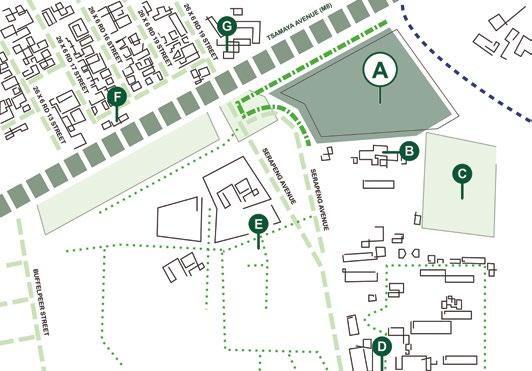
KEY
A — Nelson Mandela Park
B — JNF Walter Sisulu Environmental Centre
C — Mandela Park Peace Garden
D — Tshwane North TVET College: Mamelodi Campus
E — Mamelodi Regional Hospital
F — ZCC Mamelodi
G — Tlakukani Primary School
— Minor Arterials
— Local Streets
— Walkways
— Special Pavements and/or Access Roads
— Waterways

KEY
A — Nelson Mandela Square
B — Nelson Mandela Square Shopping Centre
C — Sandton Library
D — Tourist Information Centre
E — Sandton Mall
F — DaVinci Hotel and Suites on Nelson Mandela Square
G — The Forum
H — Regus Johannesburg Sandton Nelson Mandela Square
I — Michelangelo Hotel
J — Sandton Convention Centre
K — Garden Court Sandton City
L — Citibank South Africa and City Bank Place
M — Onomo Johannesburg Sandton Hotel
N — Netcare South Africa
O — Capitec Business: Sandton Campus
P — Pink Elephant South Africa
Q — SiMODiSA Association and Visual Aspiration
R — Gautrain Sandton Station
S — Old Mutual Place
— Minor Arterials
— Local Streets
— Walkways
— Special Pavements and/or Access Roads Location maps
An indicative list of places named after Nelson Mandela in South Africa (compiled by Celeste McKenzie and Yolandi Burger)
Eastern Cape
Madiba Bay Leisure Park (Gqeberha)
Mandela Street (Humansdorp)
Mandela Street (Motherwell)
Mandela Street (Grahamstown)
Mandela Village (Uitenhage)
Nelson Mandela Bay Municipality
Nelson Mandela Bay Stadium (Gqeberha)
Nelson Mandela Drive (Umtata)
Nelson Mandela Hall in Rhodes University (Grahamstown)
Nelson Mandela Metropolitan Art Museum (Gqeberha)
Nelson Mandela Museum (Qunu)
Nelson Mandela Route (King Williams Town)
Nelson Mandela Street (East London)
Nelson Mandela Street (Jeffreys Bay)
Nelson Mandela University (Gqeberha)
Free State
Mandela Park (Phuthaditjhaba)
Mandela Road (Tabong)
Mandela Township (Parys)
Nelson Mandela Drive (Bloemfontein)
Gauteng
Mandela’s House (Soweto)
Mandela Mining Precinct (Johannesburg)
Mandela Section (Bekkersdal)
Mandela Street (Soweto)
Mandela Street (Randfontein)
Mandela Street (Johannesburg)
Mandela Township (Khutsong)
Mandela Village (Hammanskraal)
Nelson Mandela Auditorium (Pretoria)
Nelson Mandela Bridge (Johannesburg)
Nelson Mandela Building (Johannesburg)
Nelson Mandela’s Children Hospital (Johannesburg)
Nelson Mandela Drive (Pretoria)
Nelson Mandela Centre of Memory (Johannesburg)
Nelson Mandela Park (Pretoria)
Nelson Mandela Square (Johannesburg)
Nelson Mandela Street (Etwatwa)
Nelson Mandela Theatre (Johannesburg)
Kwazulu Natal
Madiba Hiking Trail (Transkei)
Mandela Drive (Mpophomeni)
Mandela Park (Mpola)
Mandela Road (Ladysmith)
Nelson Mandela Capture Site (Howick)
Nelson R Mandela School of Medicine (Durban)
Limpopo
Mandela Park (Giyani-E)
Mandela Park (Matsulu)
Mandela Street (Bela Bela)
Mandela Street (Phagameng)
Nelson Mandela Drive (Modimolle)
Nelson Mandela Street (Musina)
Nelson Street (Siloam)
Mpumalanga
Dr Mandela Drive (Middleburg)
Mandela Street (Embalenhle)
Mandela Village (KwaMhlanga)
Nelson Mandela Street (Emalahleni)
North West
Mandela Street (Potchefstroom)
Mandela Street (Swartruggens)
Nelson Mandela Street (Rustenburg)
Nelson Mandela Street (Mafikeng)
Northern Cape
Mandela Road (Prieska)
Mandela Street (Calvinia)
Mandela Street (Douglas)
Mandela Street (Vioolsdrif)
Western Cape
Mandela Drive (Cape Town)
Mandela Park Township (Cape Town)
Mandela Street (Gansbaai)
Mandela Street (Plettenberg Bay)
Nelson Mandela Boulevard (Cape Town)
Nelson Mandela Drakenstein Prison House (Cape Town)
Nelson Mandela Gateway to Robben Island (Cape Town)
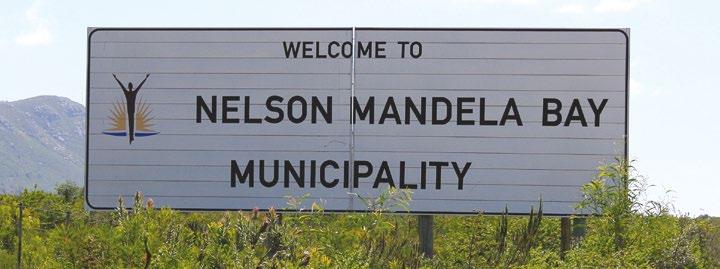
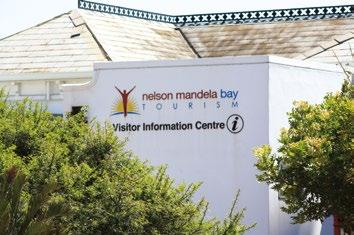

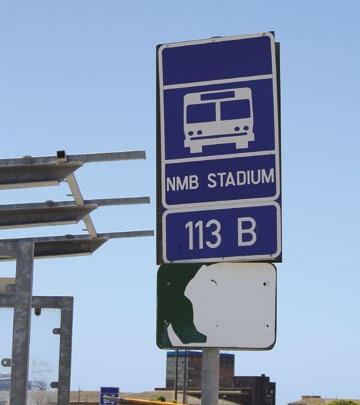
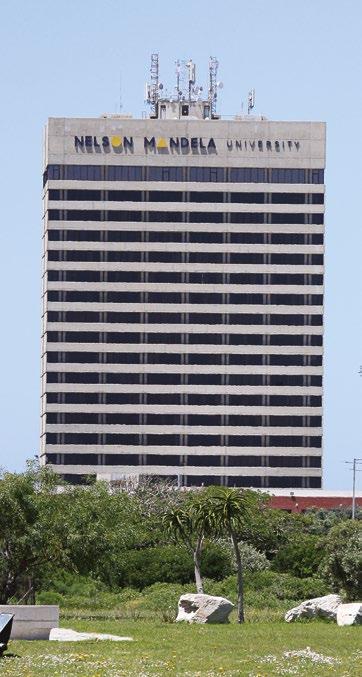
1. Spoken during the Exploring Madiba’s Graphic Heritage Workshop, Nelson Mandela Foundation, 2 March 2023. See: McKenzie, C., Burger, Y. and Harland, R.G. (2023). Placemaking through Mandela’s graphic heritage. Loughborough University. Media. https://doi.org/10.17028/rd.lboro.23654385.v1 [Accessed: 15 February 2024].
2. Nelson Mandela Foundation. (2024). About Us. https://www.nelsonmandela.org/about-the-centre-of-memory1 [Accessed: 15 February 2024].
3. Constitution of the Republic of South Africa, 1996 – Schedule 1: National flag. https://www.gov.za/ documents/constitution/constitution-republic-south-africa-1996-schedule-1-national-flag-07-feb-1997 [Accessed: 15 February 2024].
4. Harland, R.G. and Xu, J. (2021). Repositioning Graphic Heritage (online version). Loughborough University. https:// doi.org/10.17028/rd.lboro.14273105.v1 [Accessed: 15 February 2024].
5. Harland, R.G., Barnes, A. and Burger, Y. (2022). The Absence of Graphic Representations of Madiba in Nelson Mandela Park, Mamelodi, South Africa. In: Bruyns, G., Wei, H. (eds) [ ] With Design: Reinventing Design Modes. IASDR 2021. Springer, Singapore. https://doi.org/10.1007/978-981-19-4472-7_193 [Accessed: 15 February 2024].
6. For an account of the early research, watch this short video. McKenzie, C., Burger, Y. and Harland, R.G. (2023). Placemaking through Mandela’s graphic heritage. Loughborough University. https://doi.org/10.17028/rd.lboro.23654385.v1 [Accessed: 15 February 2024].
7. Details of the workshop event can be located here: Harland, R.G. Burger, Y. and Burger, E.A. (2023). Exploring Madiba’s Graphic Heritage Workshop Information Pack. Loughborough University. https://doi.org/10.17028/rd.lboro.22249465.v2 [Accessed: 15 February 2024].
8. Strauss, A.L. (1961). Images of the American City. New York: The Free Press of Glencoe, p. 2.
9. Harland, R.G. Bridge, J. Nash, M. and Rabagliati, M. (2023). Utilising Graphic Heritage for Heritage Interpretation: A Case Report on Testing the Applicability of Graphic Heritage as a Development Tool for UNESCO Heritage Designations, Heritage & Society. https://doi.org/10.1080/2159032X.2023.2248580 [Accessed: 15 February 2024].
10. Zeisel, J. (2006). Inquiry by design. W.W. Norton & Company Inc.: New York, pp. 159–190.
11. Mitchell, W.J.T. (1986). Iconology: Image, Text, Ideology. Chicago: The University of Chicago Press, p. 10–13.
12. Harland and Xu (2021), p. 125.
13. Zeisel, J. (2006), p. 168.
14. Hall, P. (1996). The Cart Before the Horse Housing and Development in Mandela Village. Indicator South Africa, 13(4), p. 67–72. https://journals.co.za/doi/pdf/10.10520/AJA0259188X_911
[Accessed 15 February 2024].
15. South African Tourism (n.d.). Nelson Mandela stands tall in Hammanskraal.
https://www.southafrica.net/za/en/travel/article/nelson-mandela-stands-tall-in-hammanskraal [Accessed 15 February 2024].
16. Rafapa, M. (2021). Lack of clean water in Hammanskraal is a violation of rights, says SAHRC. https://www.groundup.org.za/article/water-hammanskraal-brown-and-smells-say-residents/ [Accessed 15 February 2024].
17. Evans, J. (2023). Hammanskraal cholera outbreak ‘represents the ears of the hippopotamus’ of SA’s wastewater treatment crisis. https://www.dailymaverick.co.za/article/2023-07-26-hammanskraal-cholera-outbreakrepresents-the-ears-of-the-hippopotamus-of-sas-wastewater-treatment-crisis/ [Accessed 15 February 2024].
18. Moretele Times (2023). Hammanskraal tennis club sweeps awards and shines in provincial finals.
https://moreteletimes.co.za/2023/10/16/hammanskraal-tennis-club-sweeps-awards-and-shines-in-provincialfinals/ [Accessed 15 February 2024].
19. Moleya, B. (2022). Young speed skaters hail sport for keeping them off streets. Available at: https://www.iol.co.za/ pretoria-news/news/young-speed-skaters-hail-sport-for-keeping-them-off-streets-95522d60-1aa8-4b35-bd6a85ba518ac0a4 [Accessed 15 February 2024].
20. Anonymous (2023). Informal interview with a local medicine woman of Mandela Village, Hammanskraal. Interviewed by Celeste McKenzie (videographer) and Dumizulu Nkwanyane (interpreter), 28 March 2023.
21. Brown, A. (2013). Empowering communities through development: A case study of Mandela Village. Journal of Community Development, 25(2), pp. 45-62.
22. Road Traffic Technology (n.d.). Nelson Mandela Bridge, Johannesburg, South Africa - Verdict Traffic.
https://www.roadtraffic-technology.com/projects/nelsonmandelabridge/ [Accessed 15 February 2024].
23. South African Tourism (2024). The Nelson Mandela Bridge, Johannesburg: A tribute to an icon.
https://www.southafrica.net/gl/en/travel/article/the-nelson-mandela-bridge-johannesburg-tribute-to-an-icon [Accessed 15 February 2024].
24. Mfaniseni, S. (2021). The Nelson Mandela Bridge as a Great Sign of Urban Transformation in Johannesburg, South Africa. Urban Forum, 32. https://doi.org/10.1007/s12132-021-09422-y [Accessed: 15 February 2024].
25. South African Tourism (n.d.).
26. City of Johannesburg (2011). Repairs for Mandela Bridge. https://joburg.org.za/media_/Newsroom/ Pages/2013%20articles/2011%20&%202012%20%20Articles/Repairs-for-Mandela-Bridge.aspx [Accessed 15 February 2024].
27. Road Traffic Technology (n.d.).
28. Road Traffic Technology (n.d.).
29. Road Traffic Technology (n.d.).
30. South African History Online (n.d.). Nelson Mandela Bridge, Johannesburg. https://www.sahistory.org.za/place/nelson-mandela-bridge-Johannesburg [Accessed 15 February 2024].
31. City of Johannesburg (2011).
32. City of Johannesburg (2011).
33. Mandela, N. (2003). Opening Speech. https://archive.nelsonmandela.org/index.php/za-com-mr-s-1503 [Accessed 15 February 2024].
34. Joburg Theatre (2020). Mandela Stage Machinery Upgrade. https://www.joburgtheatre.com/mandela-stagemachinery-upgrade/ [Accessed 15 February 2024].
35. Joburg Theatre (2020).
36. Joburg Media (2019). Joburg Theatre turns 50. Available at: https://joburg.org.za/media_/Newsroom/ Pages/2012%20Articles/Joburg-Theatre-turns-50.aspx [Accessed 15 February 2024].
37. Sessel, B. (2015). The Johannesburg Civic Theatre. Available at: https://joburg.co.za/the-johannesburg-civictheatre/ [Accessed 15 February 2024].
38. The Nelson Mandela Foundation (2023). Nelson Mandela Theatre at the Joburg Theatre Complex, previously known as the Johannesburg Civic Theatre. Available at: https://archive.nelsonmandela.org/index.php/za-com-mr-t-0305 [Accessed 15 February 2024).
39. Joburg (2023).
40, Joburg (2023).
41. Sabra, S. and Burger, Y. (2023). An exploration of co-creating South African city brands to revive the tourism industry during a global pandemic. In: Smal, D., Salaam, S., Bediako, K. and Van Zyl, R. (ed.). VULINDLELA, making new pathways, DEFSA 17th Conference Proceedings 21-22 September 2023, pp. 311-326.
42. Sabra, S. and Burger, Y. (2023).
43. South African Tourism (2024). An enduring symbol of unity and overcoming adversity as a nation. Available at: https://www.southafrica.net/gl/en/travel/article/an-enduring-symbol-of-unity-and-overcomingadversity-as-a-nation [Accessed 15 February 2024].
44. Nelson Mandela Foundation (2024). Nelson Mandela Foundation Website. https://www.nelsonmandela.org/ [Accessed 15 February 2024].
45. Nelson Mandela Foundation (2024).
46. Nelson Mandela Foundation (2024).
47. Van der Waal, G.M. (2000). Mamelodi Heritage Route. Available at: https://repository.up.ac.za/bitstream/ handle/2263/56896/mamelodi_heritage_route_optimised.pdf?sequence=1&isAllowed=y [Accessed 15 February 2024].
48. Embassy Direct (2016). Mamelodi - The Mother of Melodies. Available at: https://www.embassydirect. co.za/2016/07/11/mamelodi-the-mother-of-melodies/ [Accessed 15 February 2024].
49. Nelson Mandela Foundation (2024). Item 1116 - President Nelson Mandela Park in South Africa and Forest in Israel by the Jewish National Fund of South Africa, Trees for Africa and the Department of Water Affairs and Forestry to recognise Mr Mandela’s commitment and dedication to the development of the nation. Available at: https://atom.nelsonmandela.org/index.php/za-com-mr-t-1116 [Accessed 15 February 2024].
50. Walter Sisulu Environmental Centre (n.d.). Walter Sisulu Environmental Centre History and Founders. Available at: https://wsec.org.za/about/wsec-history-and-founders/ [Accessed 15 February 2024].
51. Sandton Chronicle (2022). History of Sandton. https://sandtonchronicle.co.za/history-of-sandton-5/ [Accessed 15 February 2024].
52. Stoughton, I. (2021). Sandton, Africa’s ‘Richest Square Mile,’ Offers a Wide Range of Luxury Homes and a Bustling Economy. Available at: https://www.mansionglobal.com/articles/sandton-africas-richest-square-mile-offers-awide-range-of-luxury-homes-and-a-bustling-economy-228681 [Accessed 15 February 2024].
53. Sandton Chronicle (2022).
54. Sandton Chronicle (2022).
55. Gerber, C. (2015) Nelson Mandela: Joburg unveils Mandela statue. Available at: https://web.archive.org/ web/20150414091617/http://www.southafrica.info/mandela/mandela-statue.htm#.VSza6PXP23I [Accessed 15 February 2024].
56. Gerber (2015).
57. Nelson Mandela Square (2024) About us. Available at: https://nelsonmandelasquare.co.za/about-us/ [Accessed 15 February 2024].
58. Nelson Mandela Square (2024).
59. Written feedback after the Exploring Madiba’s Graphic Heritage Workshop, Nelson Mandela Foundation, 2 March 2023. See: McKenzie, C., Burger, Y. and Harland, R.G. (2023). Placemaking through Mandela’s graphic heritage. Loughborough University. Media. https://doi.org/10.17028/rd.lboro.23654385.v1
[Accessed: 15 February 2024]. Endnotes
Published by the Graphic Design Research Unit
School of Design and Creative Arts, Loughborough University, 2024
Writing and design by Robert Harland and Yolandi Burger
Writing of the narratives of the six case-studies by Celeste McKenzie
Exhibition Designers: Totem Media
Printers: Oranje Printers, Senekal, Free State, South Africa
Suggested citation:
Harland, R.G., Burger, Y. and McKenzie, C. (eds.) (2024). Named after Nelson: Learning from places named after Nelson Mandela through Graphic Heritage. Graphic Design Research Unit, School of Design and Creative Arts, Loughborough University, Loughborough, United Kingdom, https://doi.org/10.17028/rd.lboro.25447459
For further information, contact:
Dr Robert Harland (r.g.harland@lboro.ac.uk)
Dr Yolandi Burger (y.burger@lboro.ac.uk)
namedafternelson.lboro.ac.uk
www.lboro.ac.uk/research/graphic-heritage
DOI: https://doi.org/10.17028/rd.lboro.25447459
All rights received © Loughborough University 2024
All images remain the rights of their respective owners and are reproduced with their kind permission.
No part of this publication may be copied, displayed, extracted, reproduced, utilised, stored in a retrieval system or transmitted in any form or by any means, electronic, mechanical or otherwsie including but not limited to photocopying, recording, or scanning without the prior written permission of the publisher.
The project team extends its heartfelt gratitude to the Higher Education Innovation Fund and Loughborough University, United Kingdom, for their generous support of the Named after Nelson project, underlining their commitment to support the creation of social, cultural and economic impact through research-informed knowledge exchange. We also express our sincere appreciation to the Nelson Mandela Foundation for their invaluable contribution and support. Their collaboration and insights have been instrumental in enriching this project, reflecting a shared dedication to preserving and promoting Nelson Mandela’s legacy. On a final note, we extend our deepest gratitude to Tshwane University of Technology for their willingness to serve as our South African academic partner. We look forward to future endeavors.
“I have learned a lot about place naming, graphic heritage, including many other subjects […] and came to the realisation that archives and graphic heritage are linked.”
Zandile Myeka59


Nelson Mandela Foundation act as gatekeeper, endorser, and facilitator of the living legacy of Nelson Mandela. An entity, project or initiative that wishes to use the Mandela name may write to the Nelson Mandela Foundation with such a request. The request is reviewed internally and assessed against varying and differentiating criteria such as evidence of direct historical linkage, direct or indirect commercial intention, and geographical proximity in relation to other institutions or entities that already bear Mr. Mandela’s name. Once the Foundation completes its assessment and decides to grant permission, a Code of Conduct must be signed. This document is used to govern granted permission to use the name of Nelson Mandela.


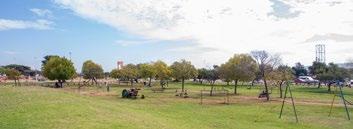



Mandela Village, Hammanskraal
Nelson Mandela Bridge, Braamfontein
Nelson Mandela Theatre, Braamfontein
Nelson Mandela Centre of Memory, Houghton
Nelson Mandela Park, Mamelodi
Nelson Mandela Square, Sandton
Named after Nelson: Learning from places named after Nelson Mandela through Graphic Heritage. A collaboration between Loughborough University, Nelson Mandela Foundation, and Tshwane University of Technology made possible through funding from the Higher Education Innovation Fund in the United Kingdom.